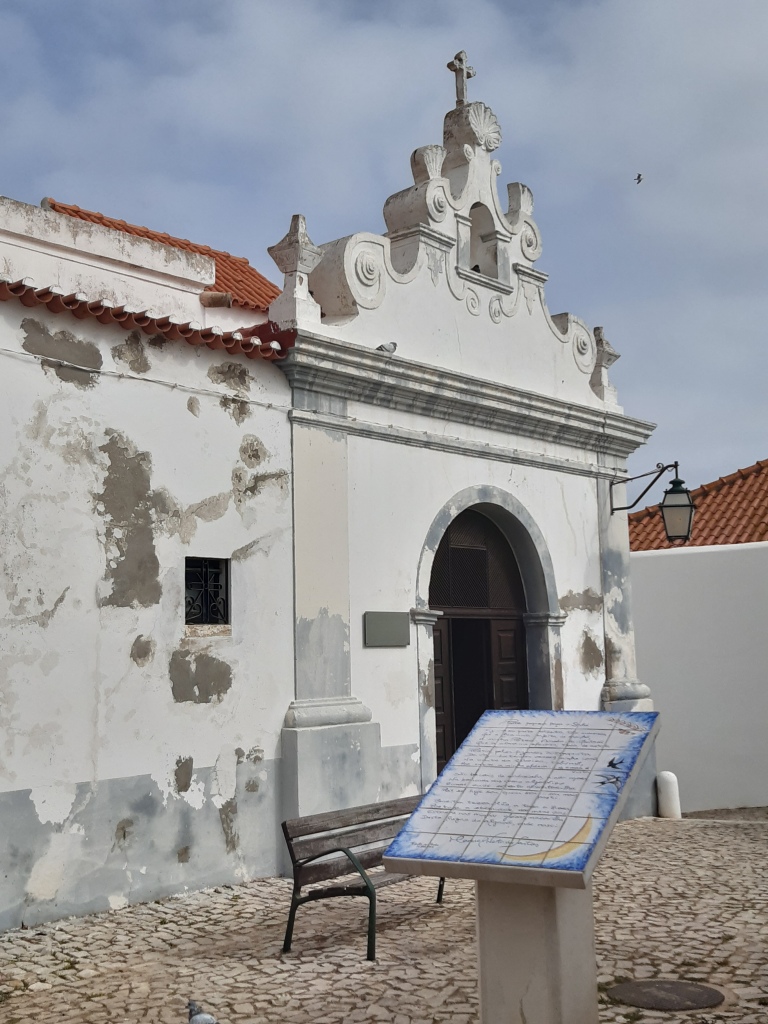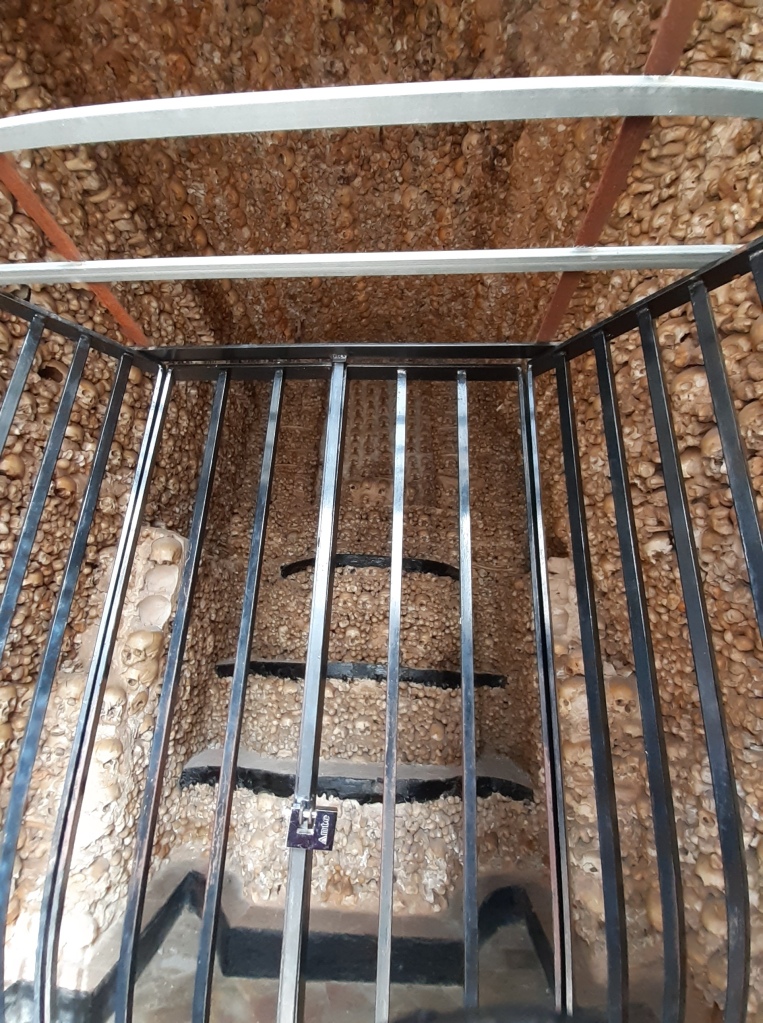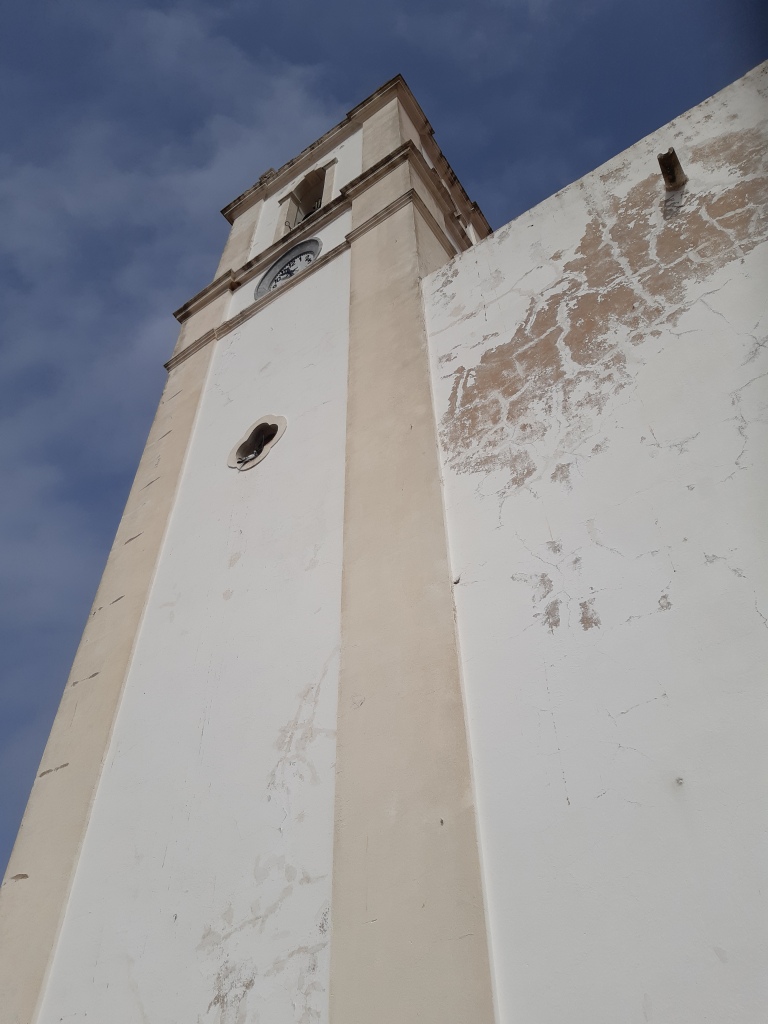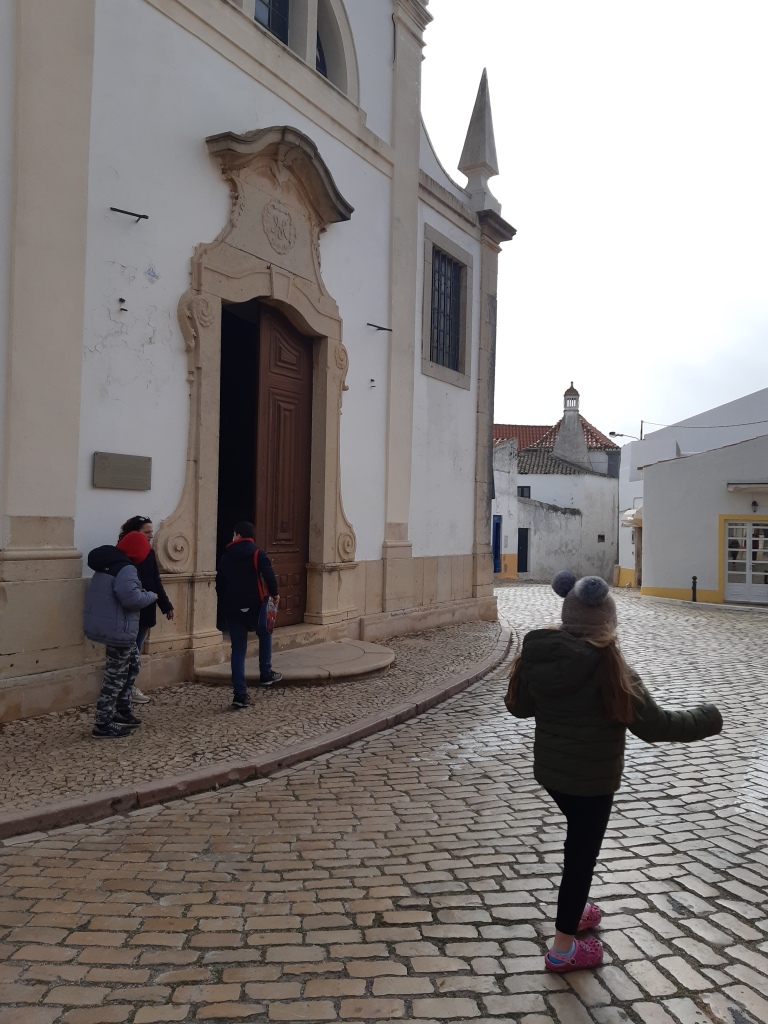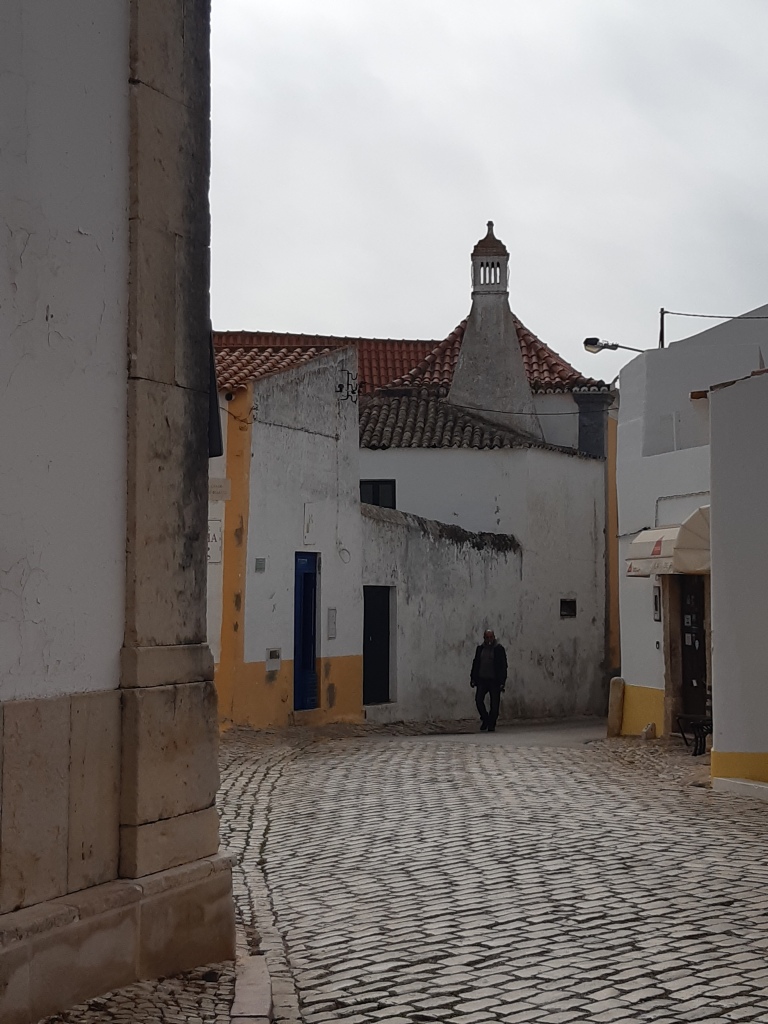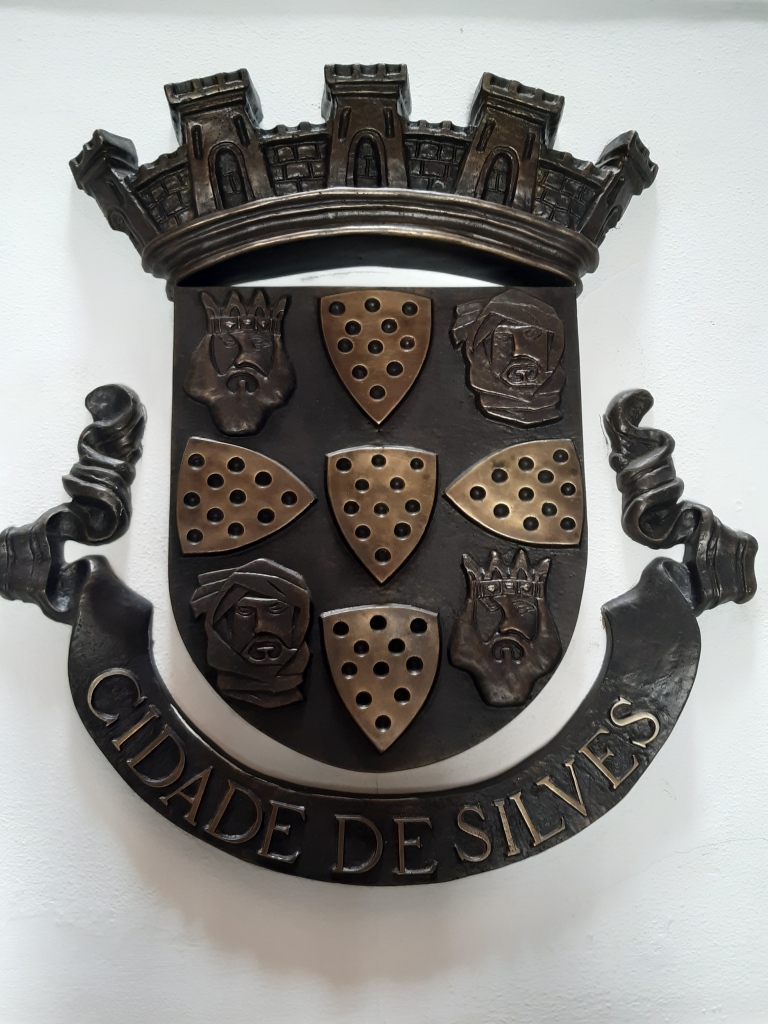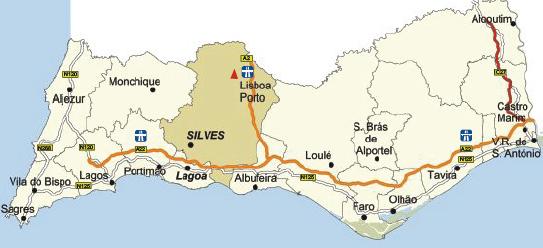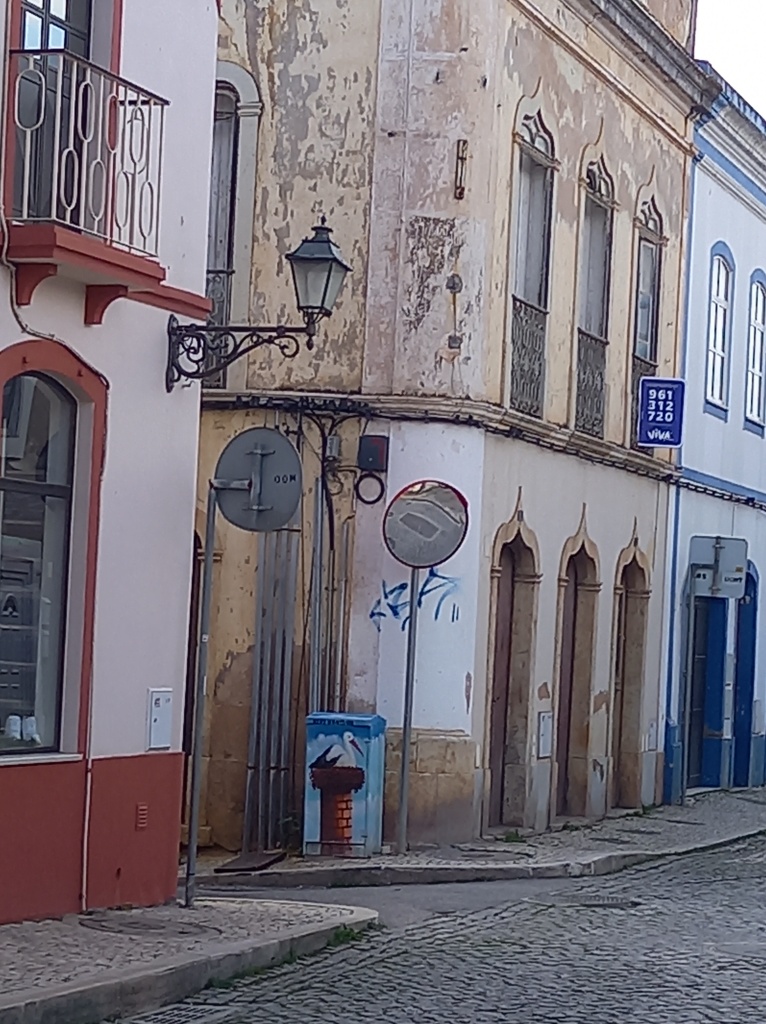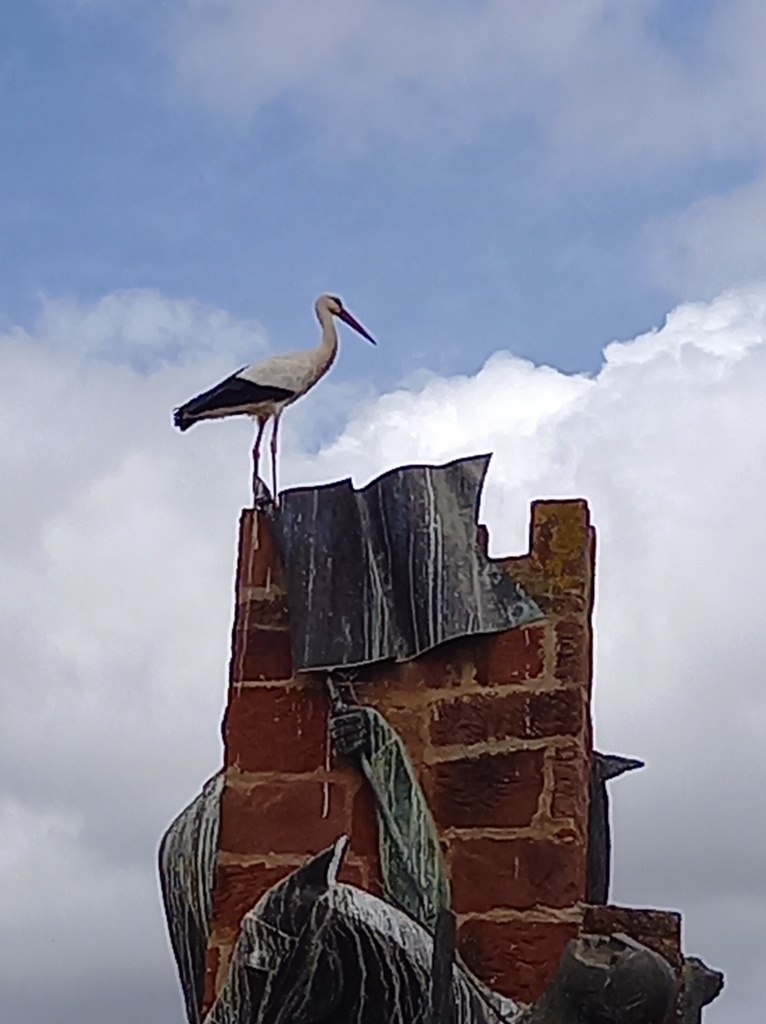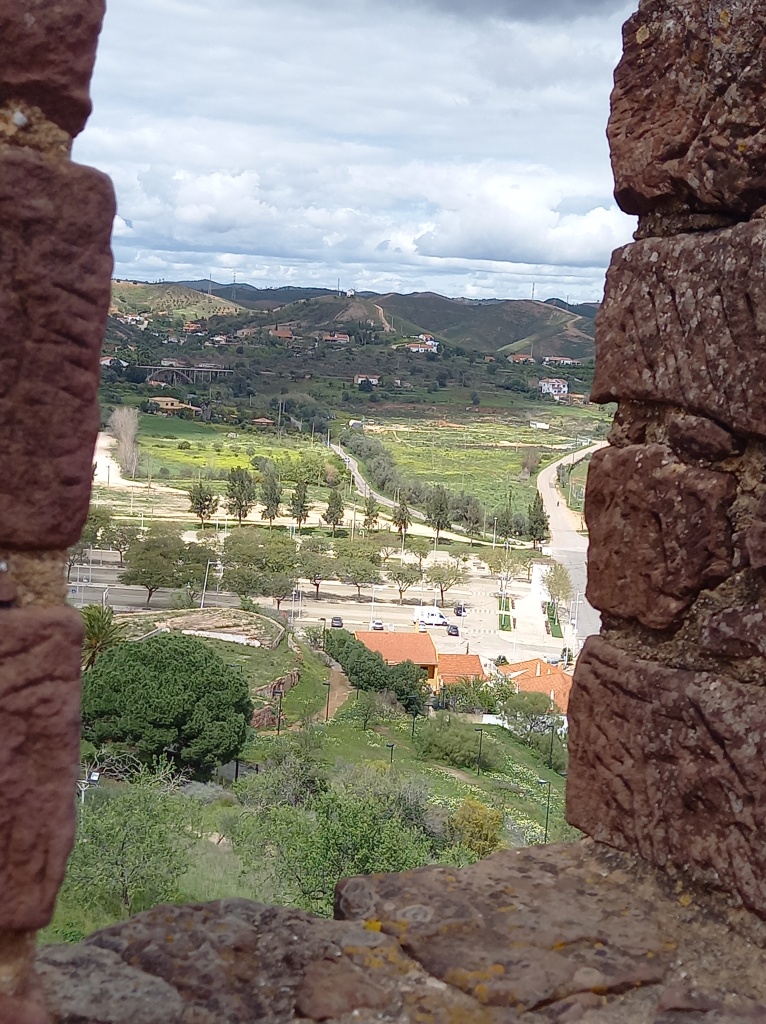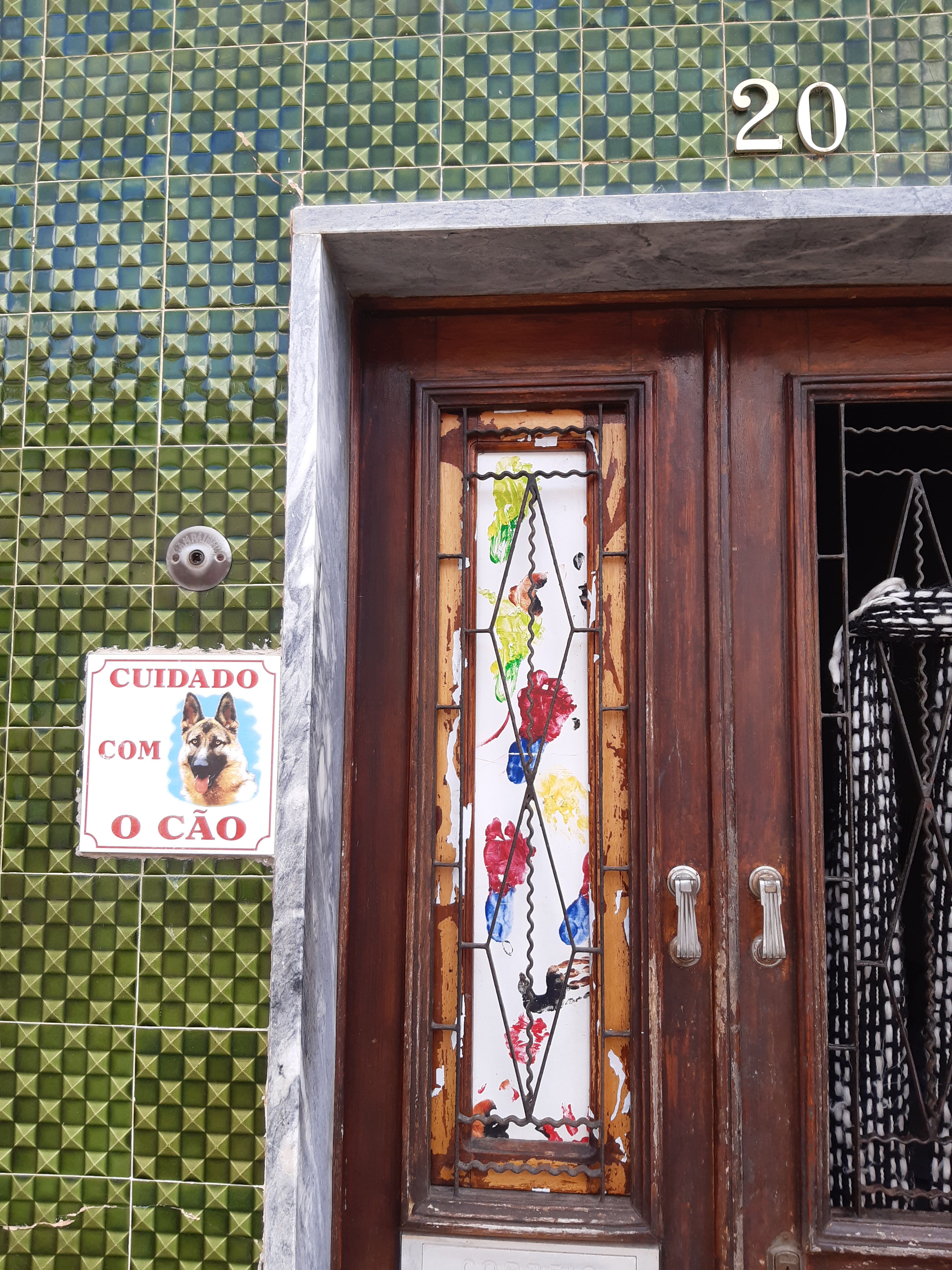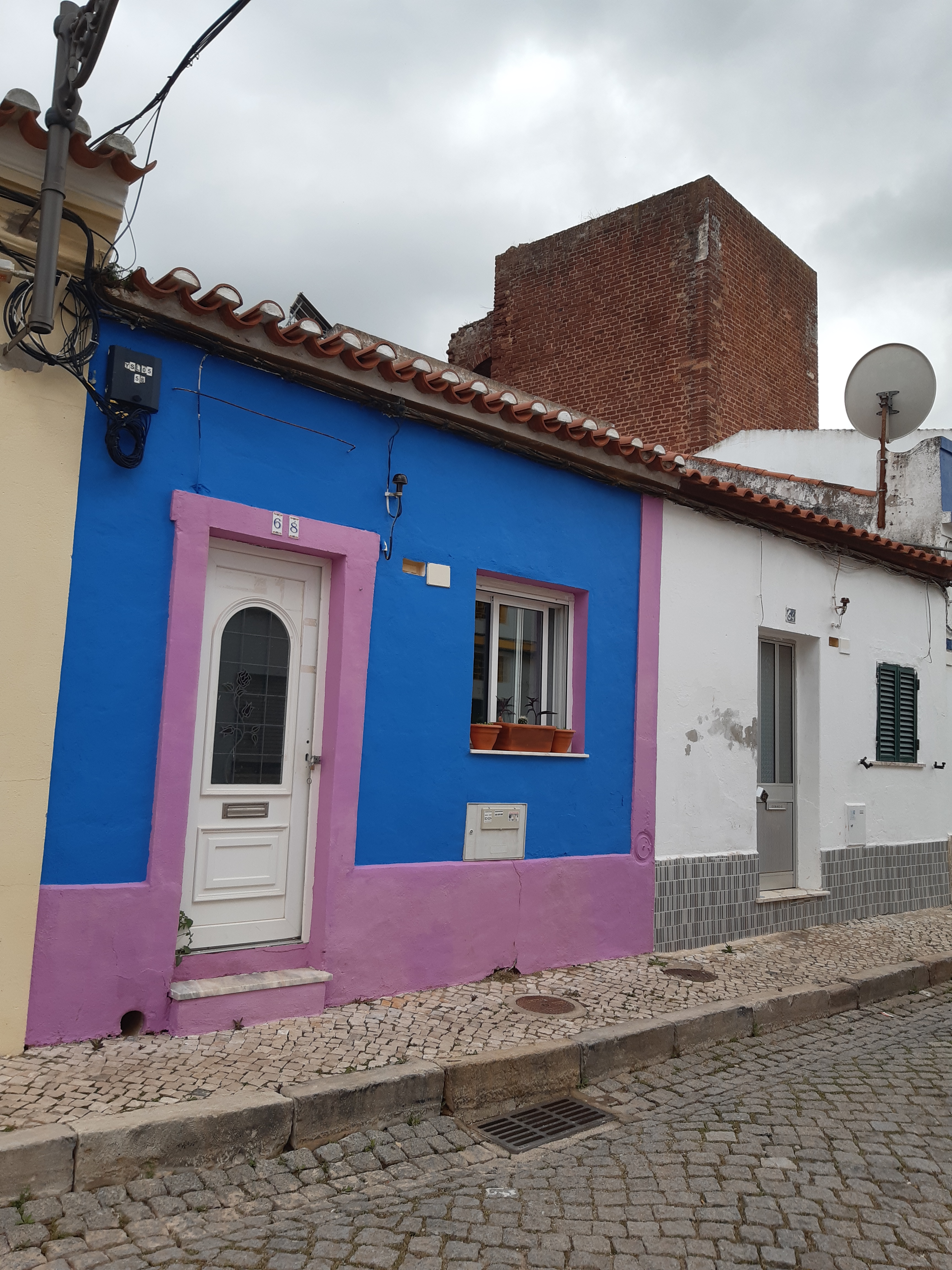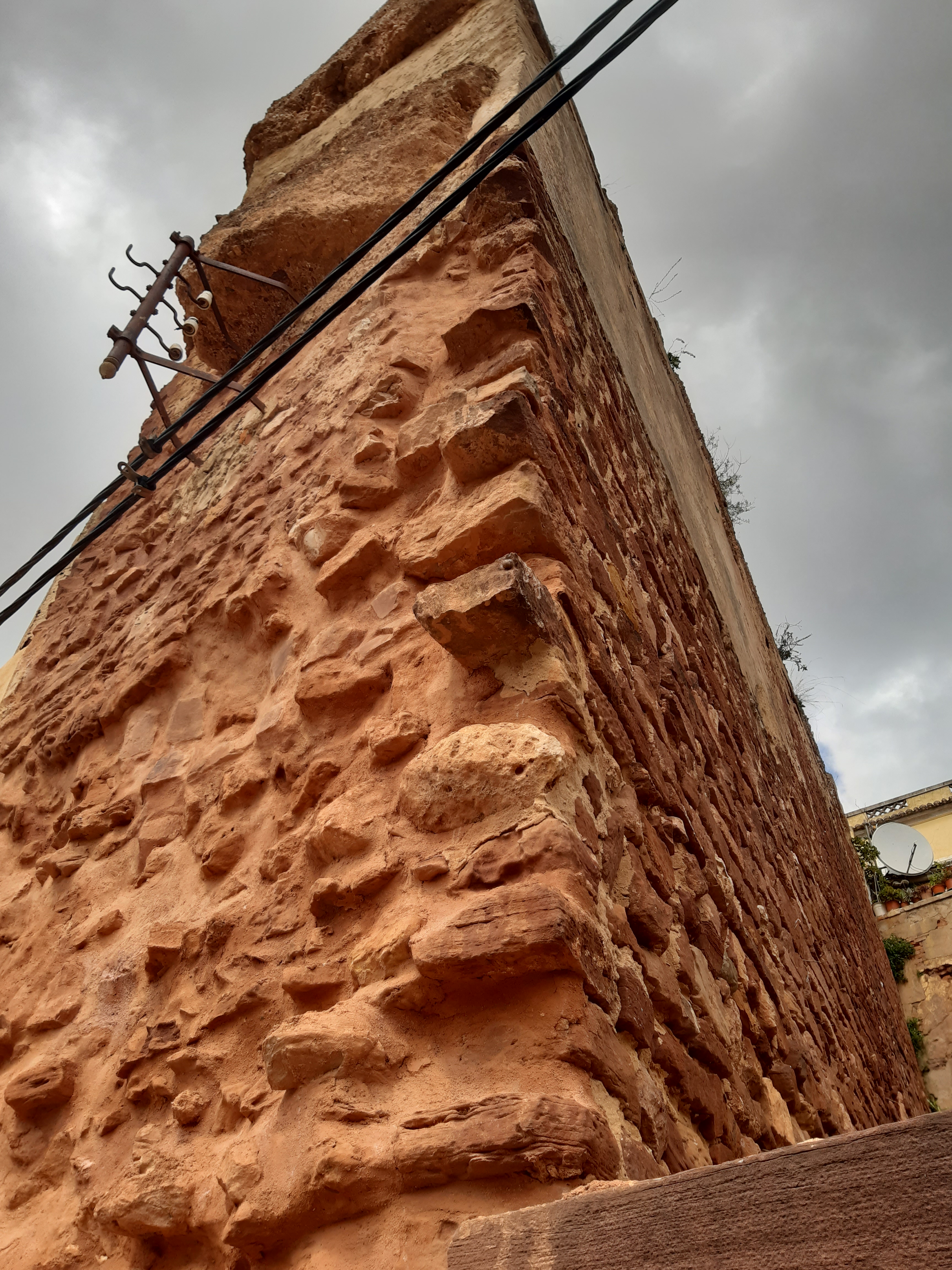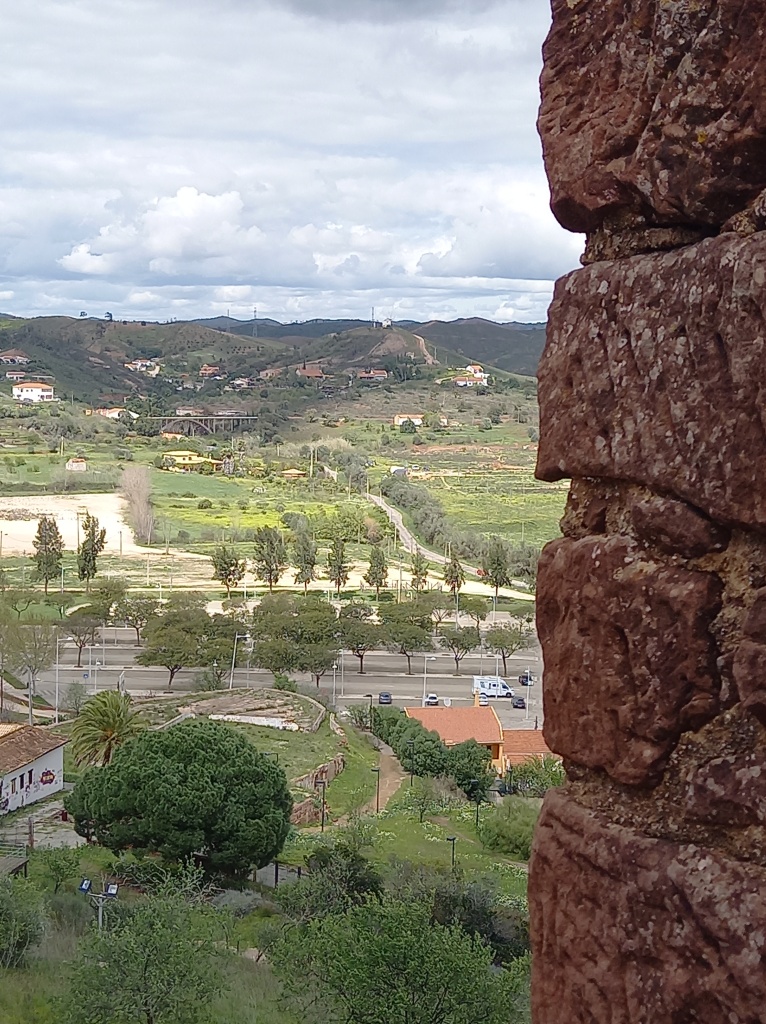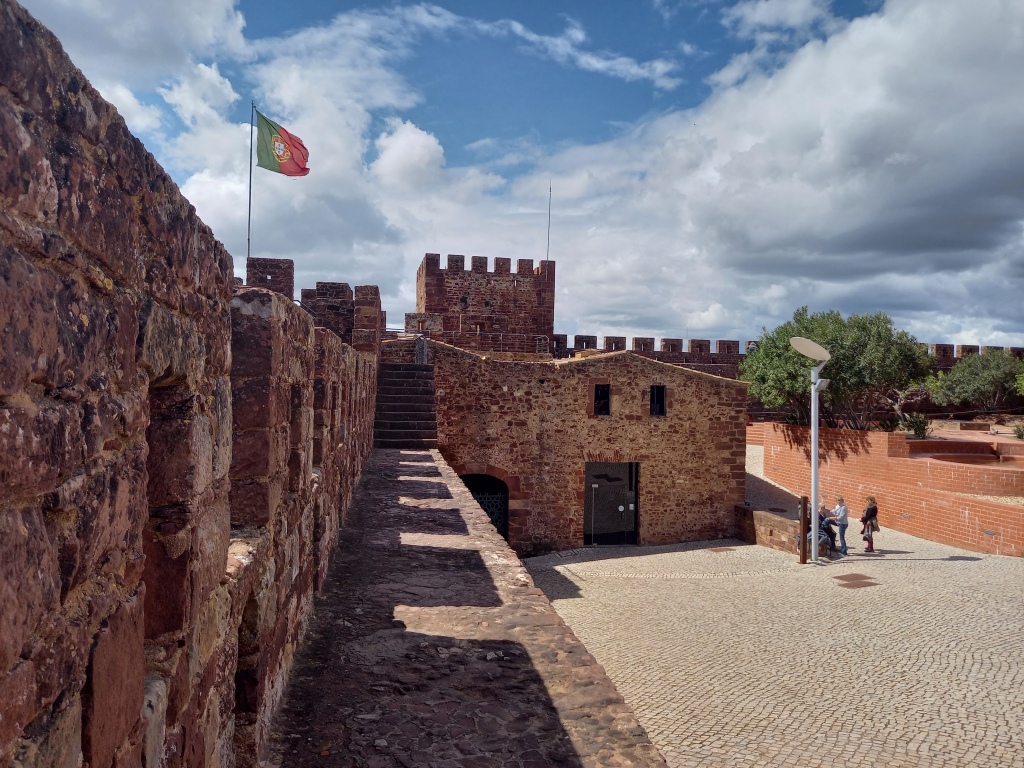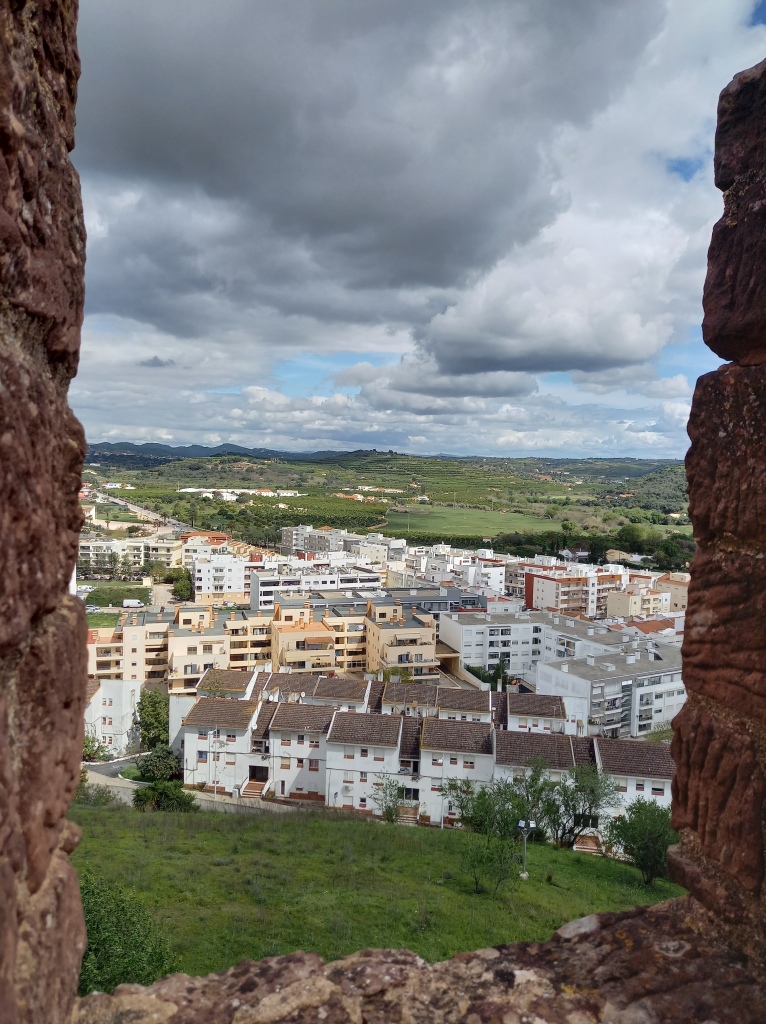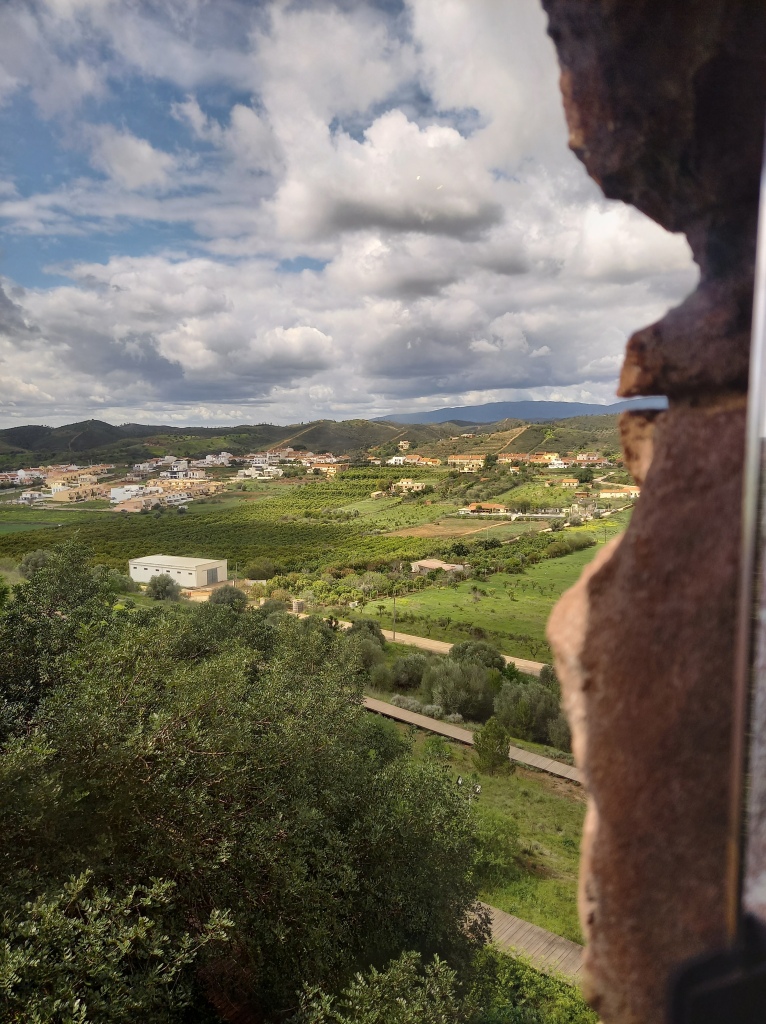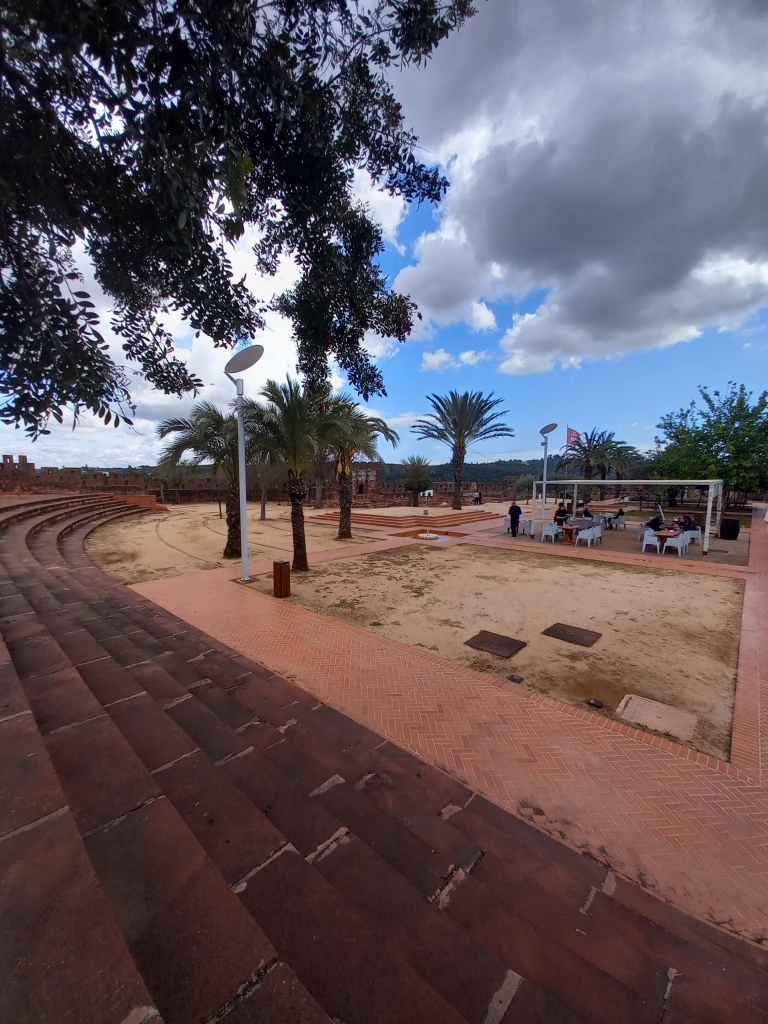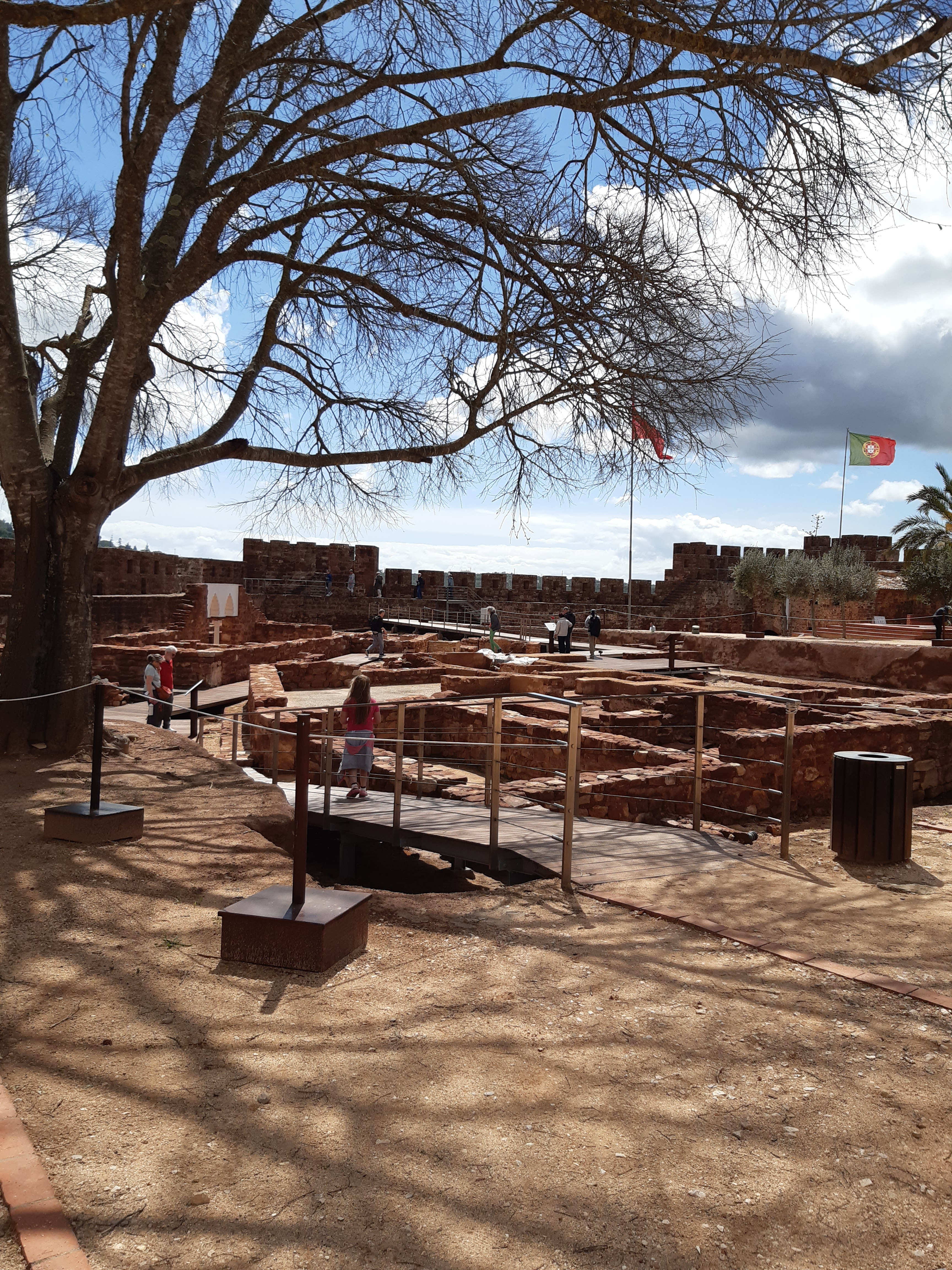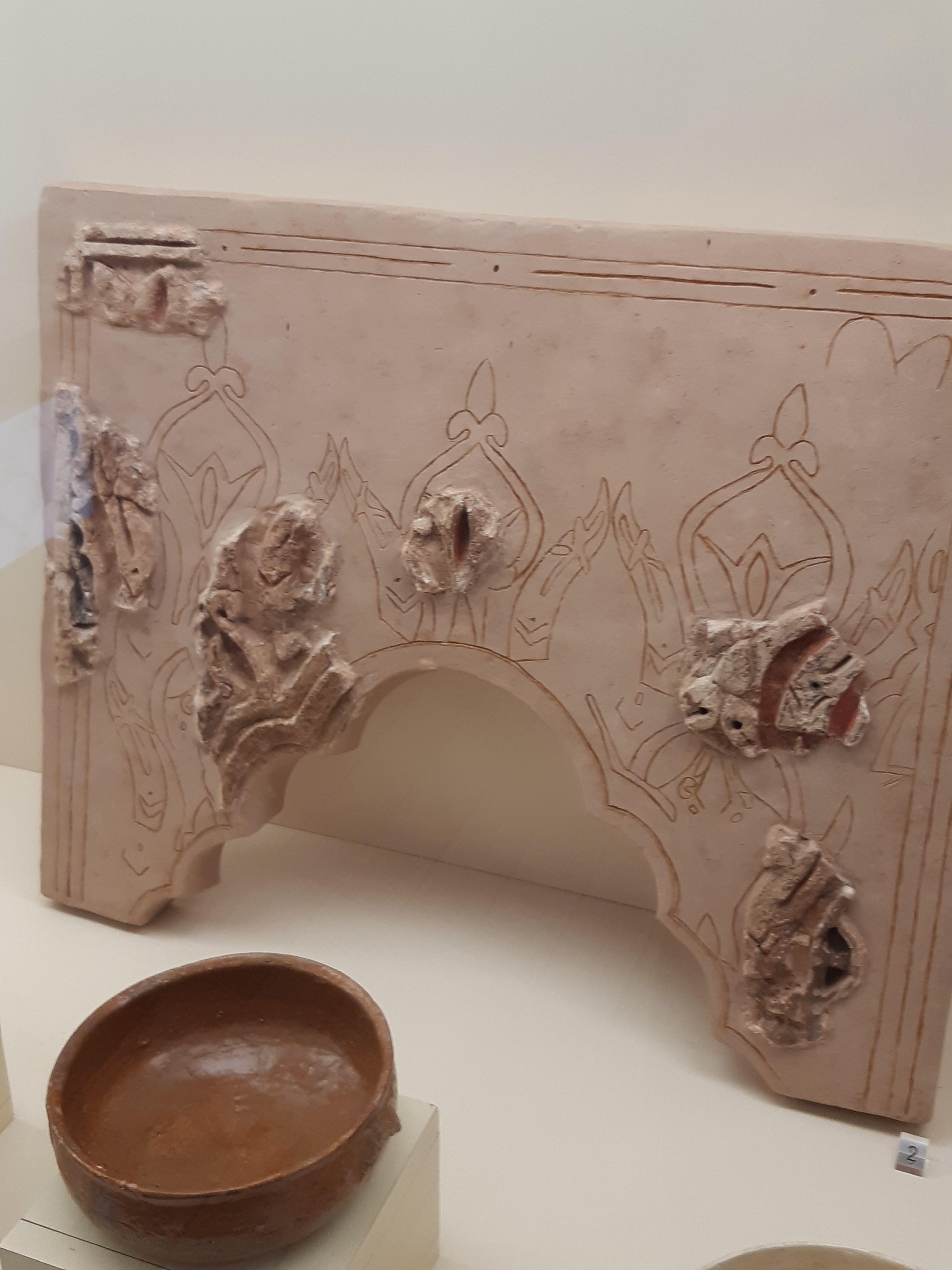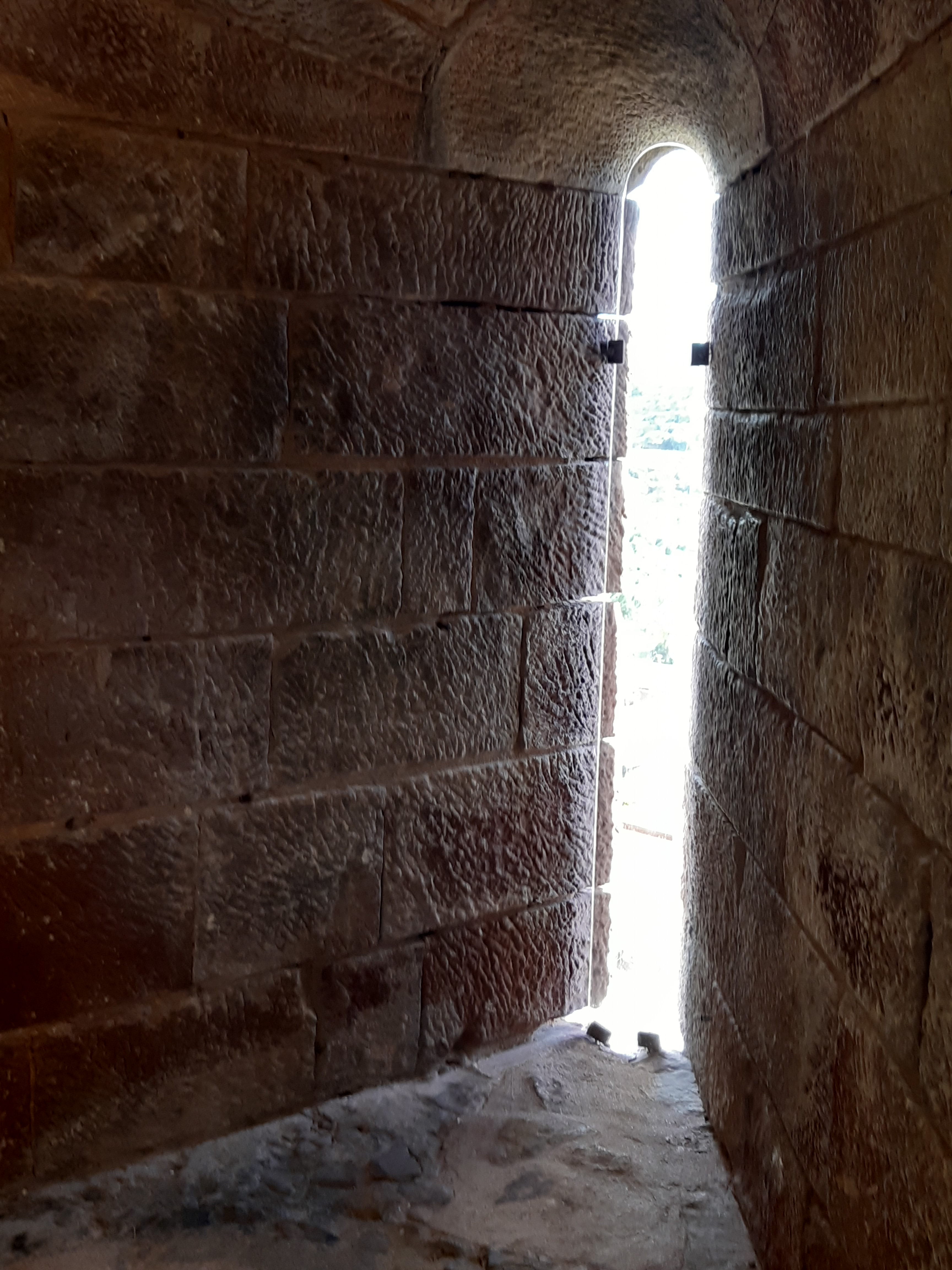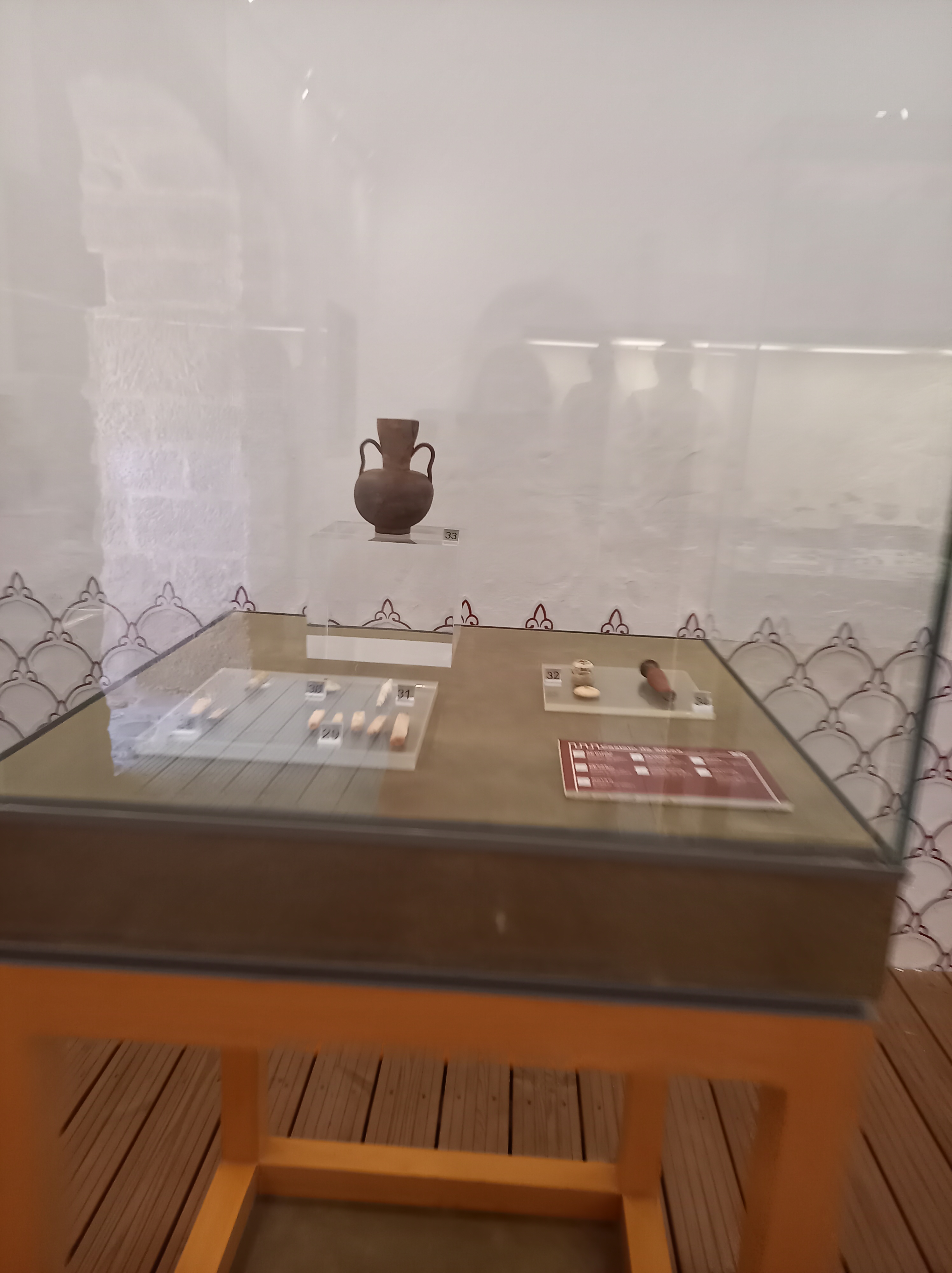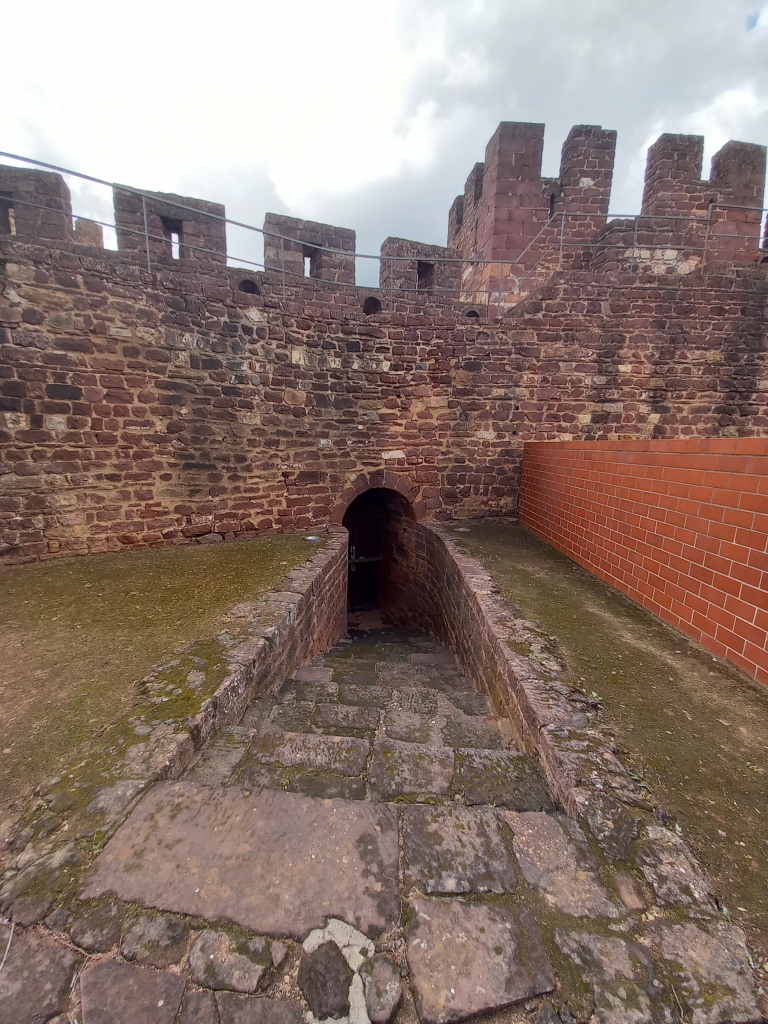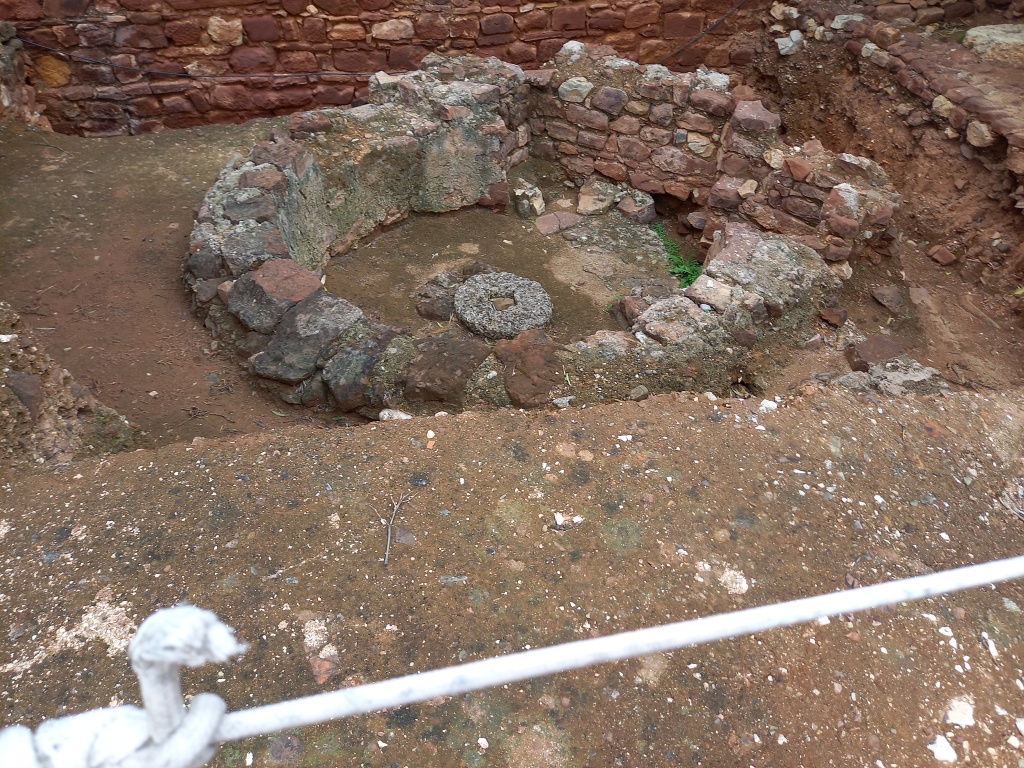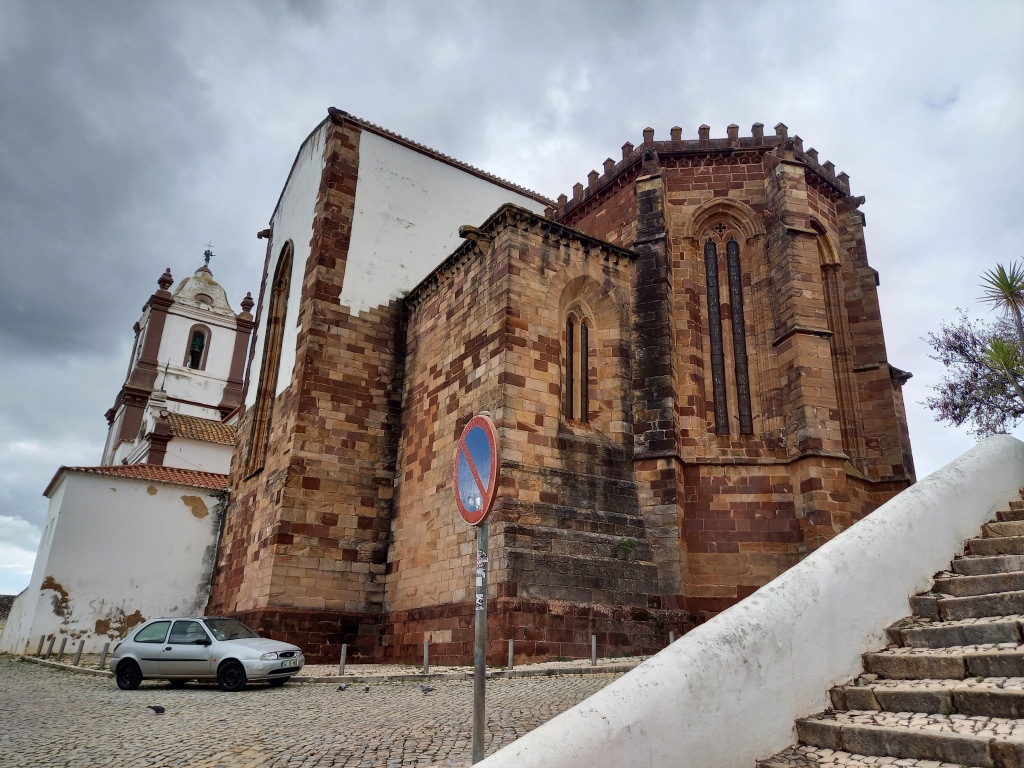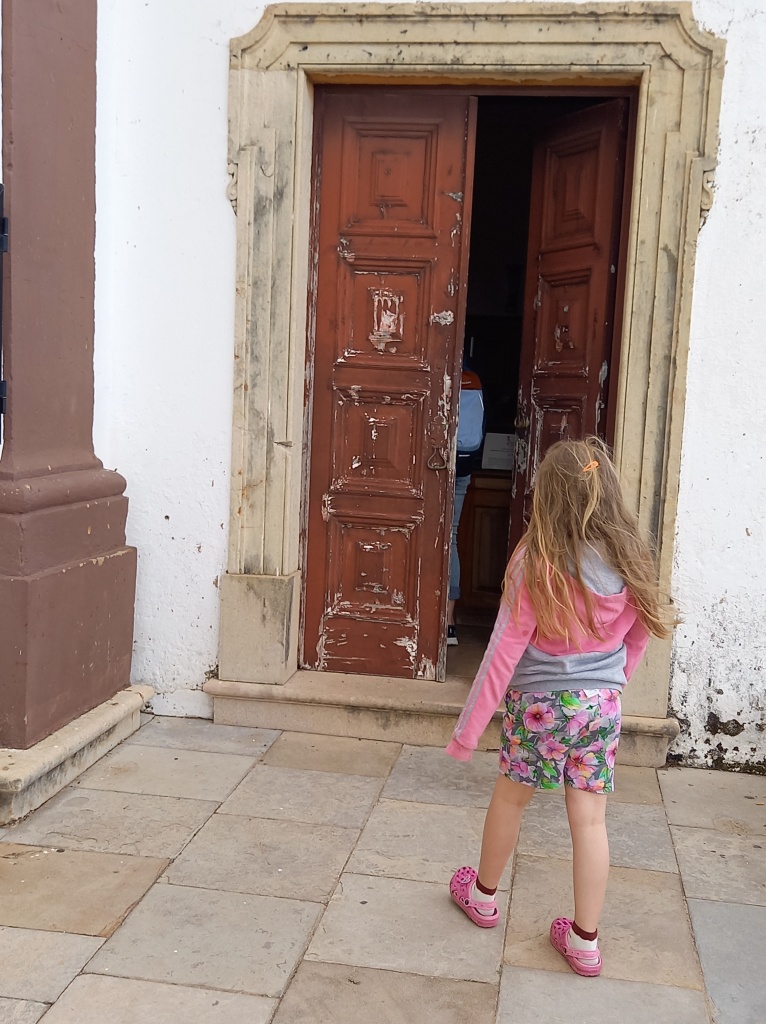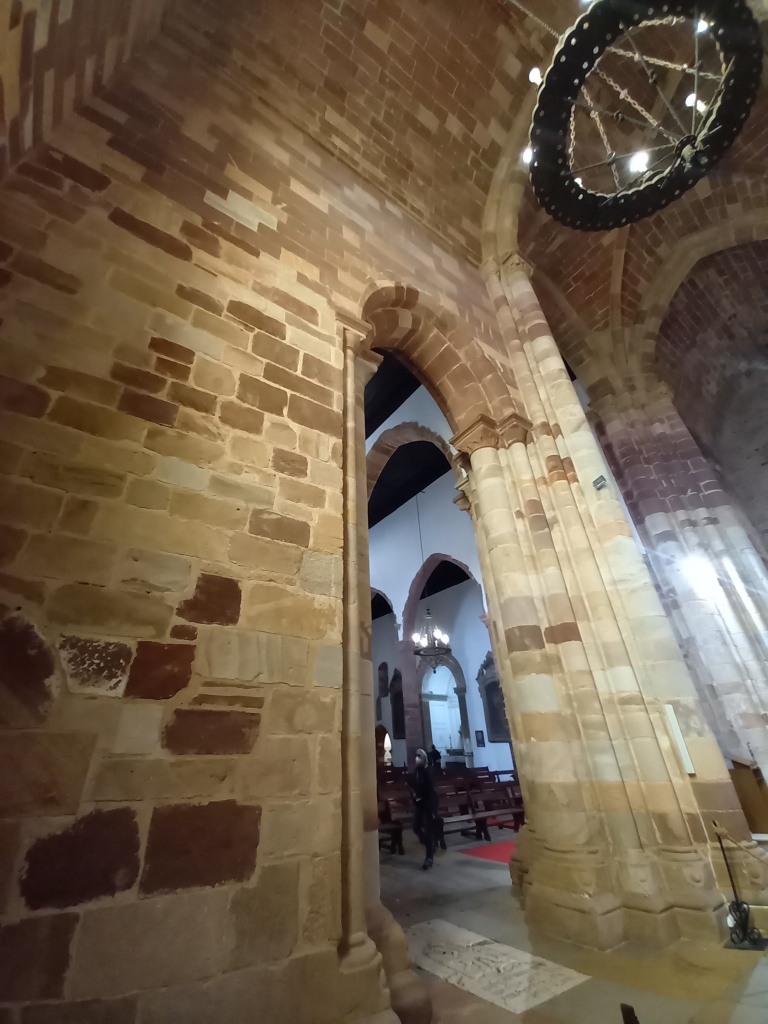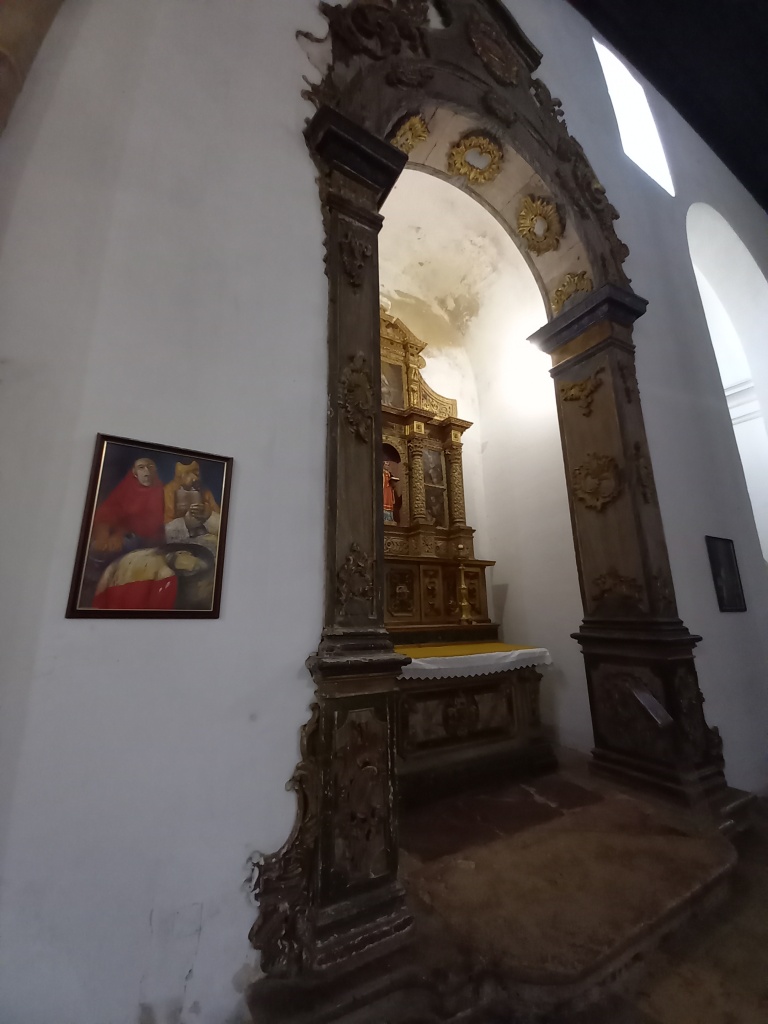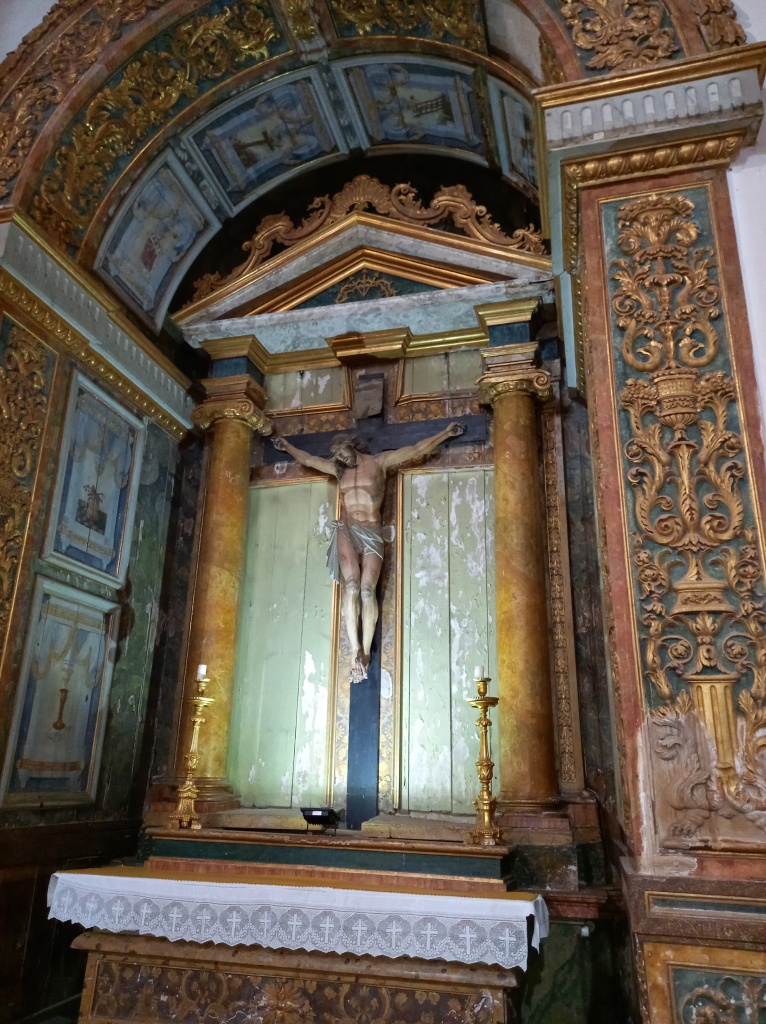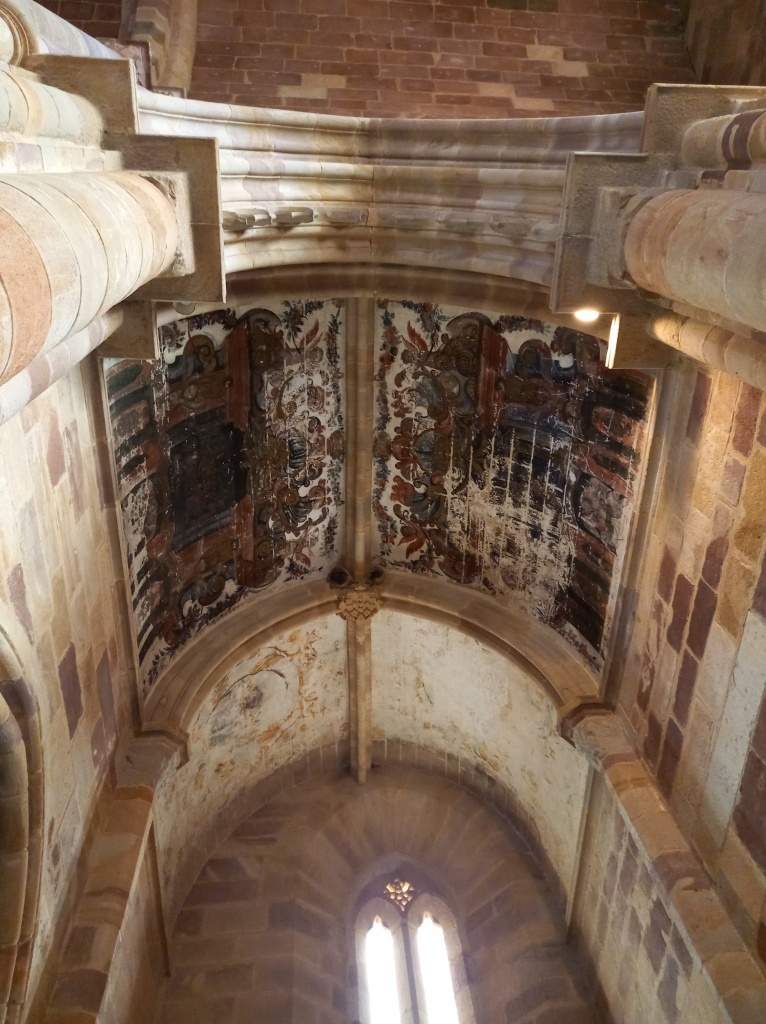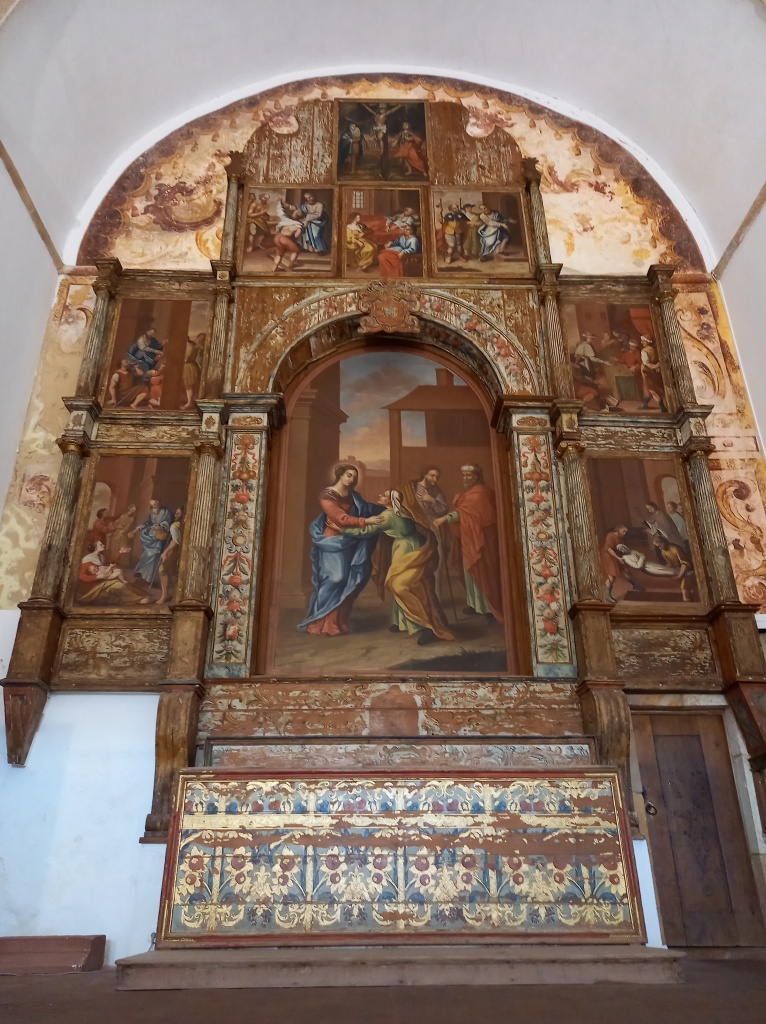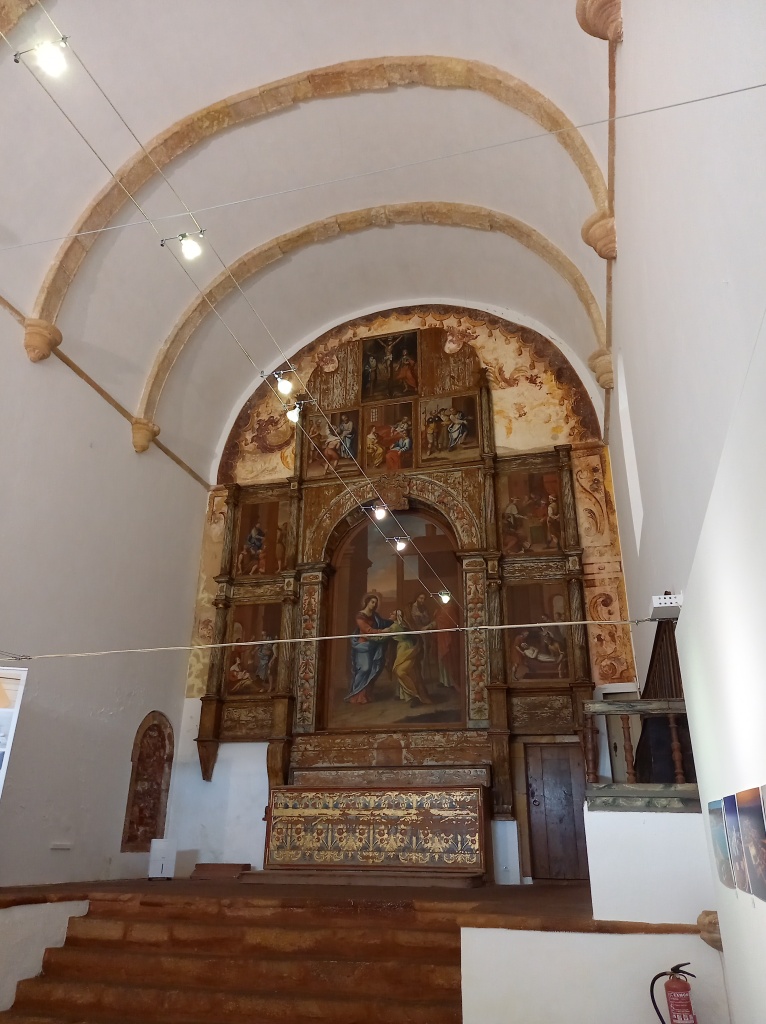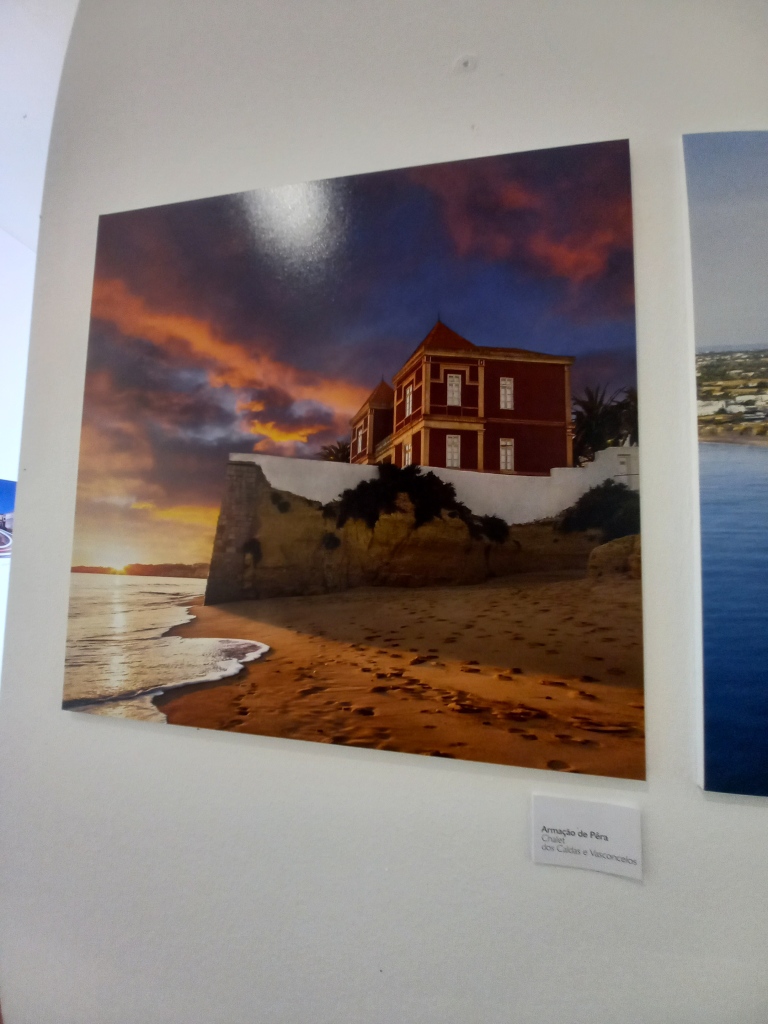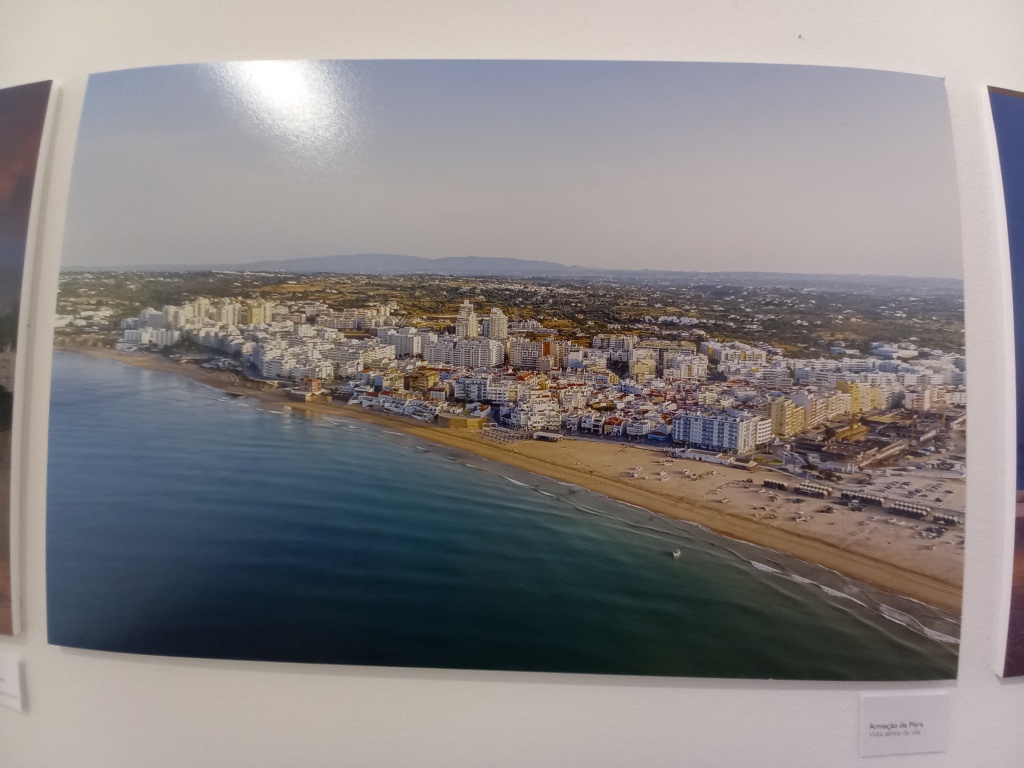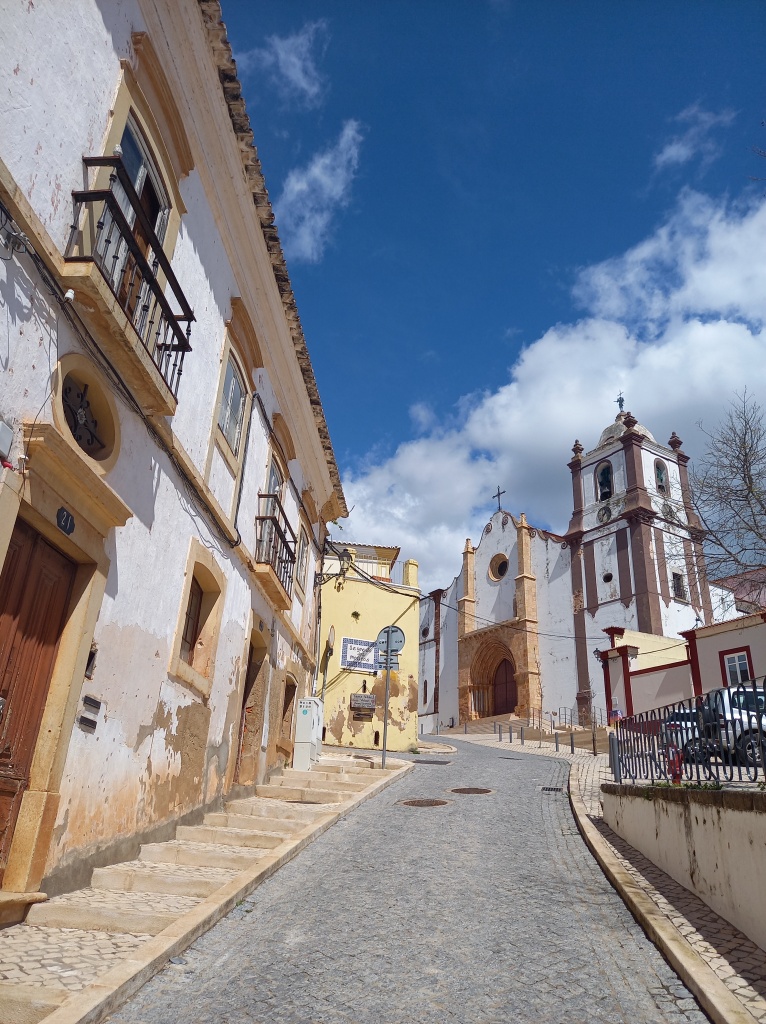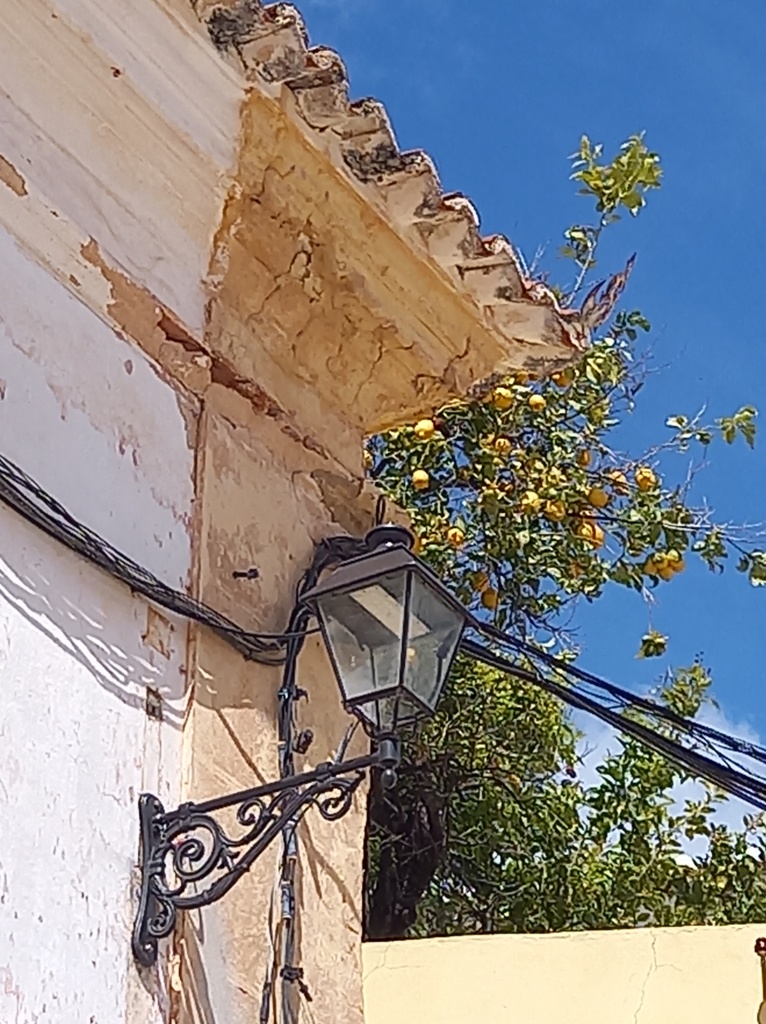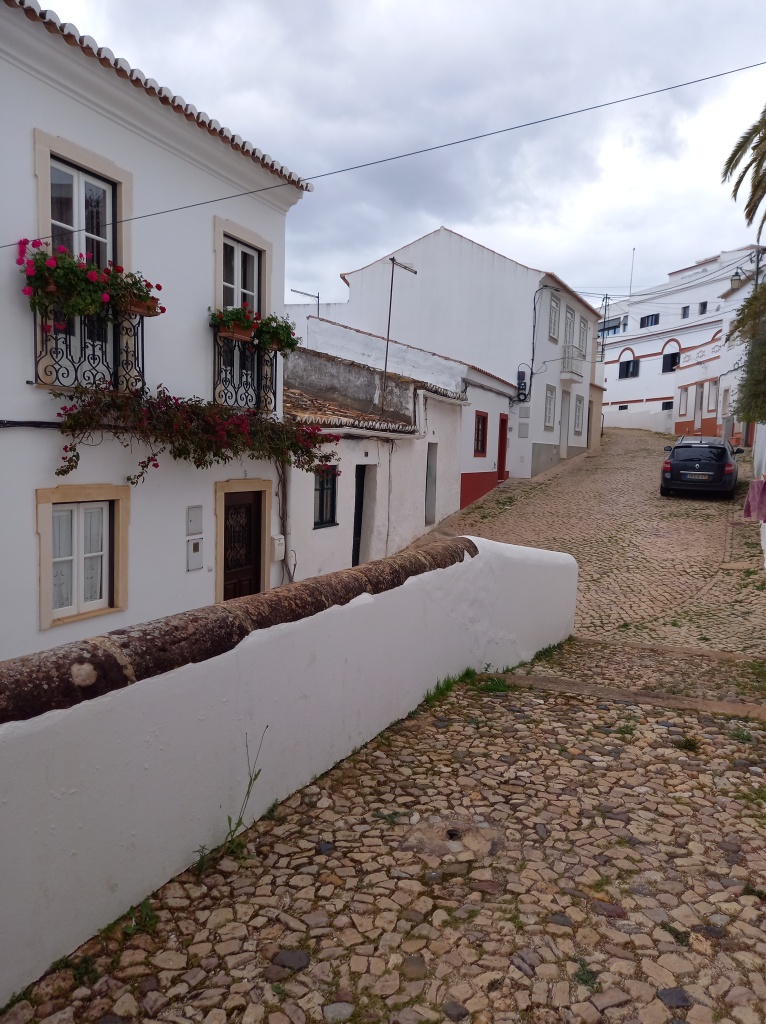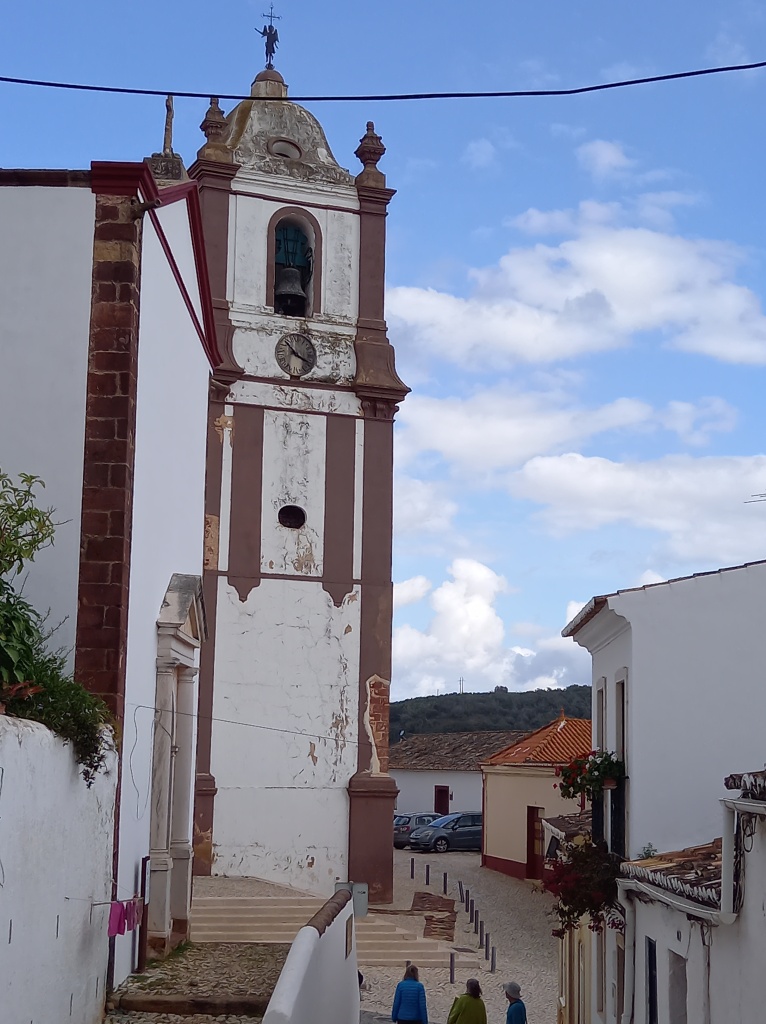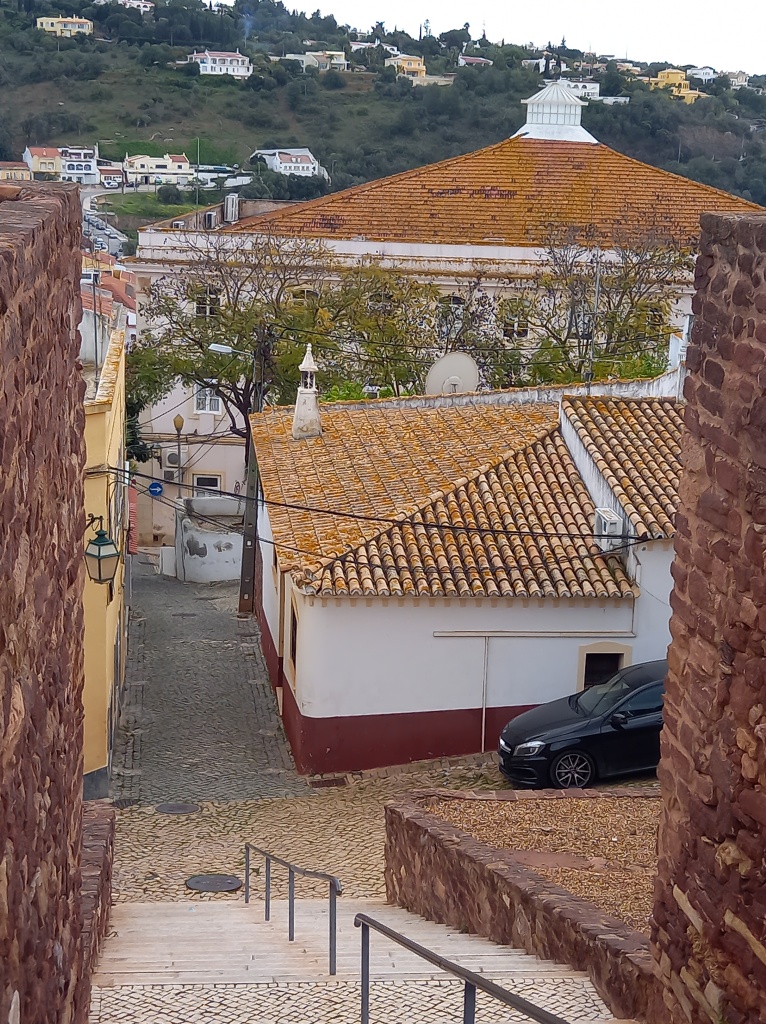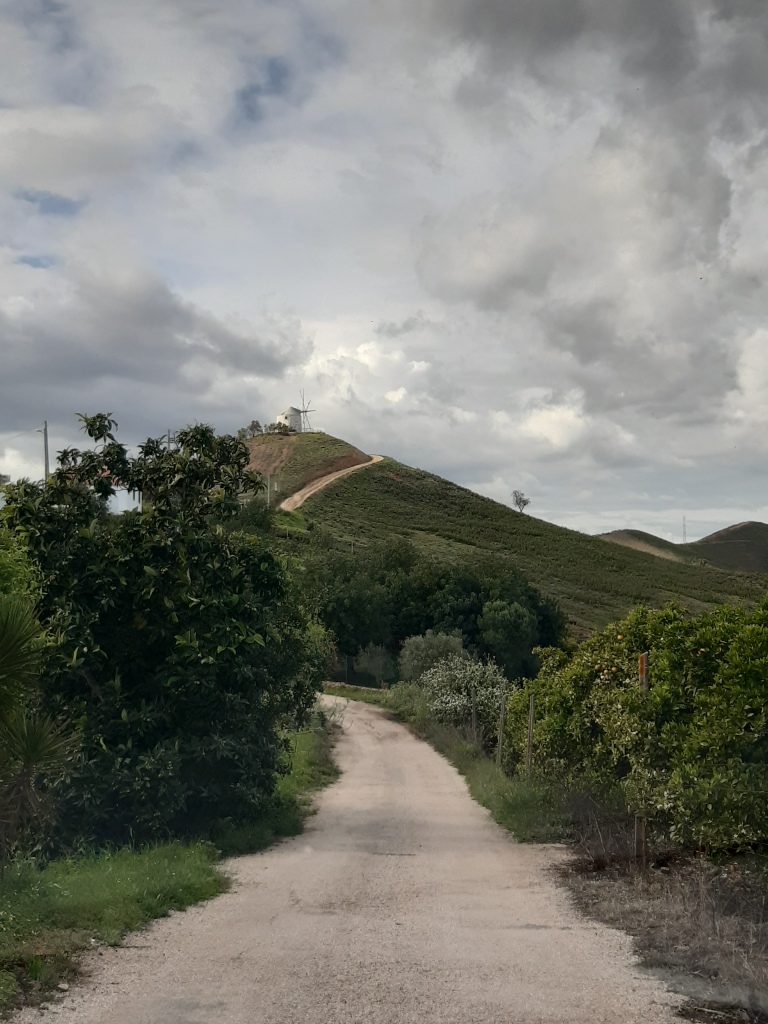Listen here to the podcast: Capela dos Ossos – Chapel of the Bones

Algarve welcomed us with rain. Heavy rain. It is believed that the end of March marks end of the winter season here. Well, cool, but we never expected it to look quite like through the window in Ireland.
Ah sure, what can you do, after all weather thankfully still cannot be fully controlled by our human selves and let’s hope it will stay so yet for a long time. I mean, less the Russians who sprinkle rainy clouds with gold dust to ensure sunny days for their national festivals…. and those who can make rainbows….
One afternoon we were sitting out on the terrace of our rented house and above the beach, few metres away, a guy who used a paraglider powered by a funny looking fan engine, literally dropped something into the air and made a rainbow :O I swear! No messing!

Arrival in Faro was super easy, no queues like at Dublin’s security, which is so out of control now as if it was a surprise to everyone that since the country was opening gradually, it would be necessary to rehire staff… but sure, rain always comes so unexpectedly in Ireland too that when it does the country goes to a halt.
Our flight was at 7am so overflying Iberic Coast starting from La Coruña, the sister city of Drogheda, through Porto and then Lisbon to Faro was a true pleasure. Meandering rivers ending their journeys in the Atlantic Ocean, huge foamy waves battering the cliffs. Yay. And just by Matagorda airport area, a neverending Lota – a super long beach – empty but for 3 people.
We rented our car from Centauro after a few in depth searches among other providers. With Centauro it is all clear, you book what you book and there’s no need for a credit card if you buy insurance.
One thing I found annoying at Faro airport was the Parking lot no 4. It is the most remote one of them all and is the one designated for the collections of rental cars and the shuttle buses to the rental car offices. For a child who spent a good while in a journey to the airport, through controls, on the flight through arrival checks, etc. it is an excruciating task to walk that bit of a distance from the arrivals terminal.
Our shuttle arrived. A couple, I guess from Ireland, joined us in the mini van. Upon arrival at the office the woman missed a step and fell onto the ground. Luckily seemed fine but not a fun beginning to her holidays.
As previously, we aimed for the cheapest, hence Fiat 500 or similar. Got a Tipo. Slightly bigger. I didn’t mind really but it felt nice so we sticked with it. At that stage we were yet to find out what a weak piece of junk this car was.
Offence goes to Fiat of course, not the broker.
A 30 degree hill is a killer for this thing, no matter how hard you push it up with your very own will power and chants, it will equally give up on you whenever it feels like doing so.
So this way we sadly experienced many o’embarrassing moments having to reignite it in the middle of steeper ascents. Shame on you Fiat, especially that Italian villages are quite comparable to those here in Portugal.
Driving on the right came to me like something I was born with. Not an issue really. And I was quite nervous about it.
The cost of renting a car in an almost-post-covid Portugal was dreadful though. Not to mention the cost of fuel….
We made it onto the road though and after an hour or so and some hundred roundabouts, we arrived in the nearby Aldi. The prices shocked me a bit. I recall pretty local Mercados in the Tavira region with local veggies and fruits at very reasonable prices. Here, on this side of Faro it is not just about terribly looking aglomerations but also International chain stores such as Aldi, Lidl, InterMarche, etc.
All commercialised, overpriced and with no local feel to them.

One of the 4 pools in our apartment complex was covered and we had a plan to use it that evening. But before doing that, we went on a mission. The sun was shining but not quite strong enough to make us go to the beach and splash in the ocean waves. We went in search of the bones.
Not in an archaeological expedition, no. These have already been found and like in most of the other similar places, here too they were apparently dag out during the works in the central part of the village. Skulls and bones of 1500 people line the walls and ceiling of this little room creating a pretty mosaic covering every centimetre of this mini Chapel. It is accessible from a small square to the right of the main entrance to the church, not from the inside of the church.
Alcantarilha is yet another town on the hill along the main Algarve route. The Chapel was built into a nave of the church of Nossa Senhora da Conceição, situated on top of this hill, a typical church of the Algarve region. Its Neoclassical facade and bell tower were completed in 1858. Similar features can be found on the nearby church of Santa Maria de Tavira, and the parish church of São Brás de Alportel. Inside is a gold vaulted interior which is typical to Manueline style. The Rococo altar dates back to 1769.
On the way up, we were in quite a disbelief that we managed to fit two cars into a steep, crammed streetlet. But locals who were enjoying a Sunday morning coffee sip in the corner micro bar did everything to encourage us to fear not and keep going. Just before we reached the church, a very assertive granny, clearly a local feminist, noticed a car driven by a man approaching from the opposite side and without thinking twice abruptly stopped and ordered the man to reverse to where he came from. Instead showed us to proceed. The guy behind another wheel obliged without a blink of an eye 🙂 I like that town.

Looking at the skulls lining the chapel walls will likely make you aware of your own mortality so maybe this attraction is not for everyone. After a moment of memento moris reflections, we look away.
On the bench, right next to it, sits a dude sipping beer from a bottle. It’s Sunday and people are slowly gathering for the morning mass. In front of the guy, opposite from the Chapel of the Bones, a tiny building. You get in with one door and exit with another. Inside, a few shelves with some basic products. Not much. Just two or 3 items of every kind sold. By the end of the room, two steps higher, sits an old lady on a tiny stool and husks beans, accompanied by an older gent.
They pretty much ignore us and our Bon dia, chatting away in Portuguese, busy with their work. So we walk over to the freezer that is positioned behind the woman’s back and fish ourselves an ice cream. A simple vanilla flavored lolly.
Card payments are not accepted. €20 note is all we have. I ask how much for the lolly, the lady throws €1 in response. But she shakes her head when I show her my 20 saying she has no change.
Hmmm… I turn around and spot a bottle of water. Walk back to grab it. The woman in the meantime decides to do some business after all and walks behind the counter and starts digging through the pockets and a little coin purse.
I take the time to observe the elderly man, completely not interested in what we are up to, sitting over a basket of long bean pods – some of them looking black and strange – and slowly hulking bean after bean and letting them fall into the pot.
In the meantime, business gets almost completed. I look at the counter where I see a €10 note, a €5 note and 4x €1 coins. That would be a deal if not for the bottle of water we now added to our purchase.
So in Spanish I ask how much for the water. The lady says €1. I silently smile thinking that probably everything is €1 here no matter the size or shape and move 1 coin back in the woman’s direction pointing to the lolly and to the water.
The lady starts adding it all up again and after a short while comes up with agreement…
We smile and thank each other after which, without further hassle she turns around and goes back to her basket of beans starting off her conversation as if it was never disturbed and we are left to make our own decisions. We decide then to go out.
A little stroll through the town’s hilltop make us quickly discover that there is not much more to see there. Some restaurants, some quite nice buildings, a few rather neglected ones too with one pink one, just opposite the entrance to the church. At least a hundred of swallow nests hanging under its roof’s edge. Looks like we were the first to ever see something special about them.
I ask how to get to the church’s bell tower. One guy says we should ask the priest for the key. But 2 others say it’s not gonna happen.
So I ask for the best way to get out of this mess of the streets we got ourselves tangled in. They kindly point the same way we arrived, to which I say “are you sure these streets are going in two ways?” And they just could not see the reason why not.

We went in search of McDonald’s. So much for local food! But it was not our foult that the Irish weather chased us all the way down to the end of Europe.
Albufeira is an old town. One we will visit yet. Because this time we did not. Why? It’s simple. Every time we wanted to go, it rained. This time it did too and on top of that it was getting real cold too. Our two small bagpacks arrived filled with swimsuits and tank tops so the shopping centre was all we really needed. The fact that it served chicken nuggets was only a positive addition on a miserable afternoon.
At least fast food chains have cheaper food here in comparison with Ireland. So we were quite contented shoving up the nuggets and drinking local juices while playing cool snap cards we have just aquired.
H&M had all we needed – black, cheap leggings and plenty of discounted stuff. We needed only 2 tops and 2 bottoms so the transaction was only pre-longed by a chat with a very kind shop assistanct who shared his story from a recent visit to Dublin.
A quick peek at the cork products! mindblowing – how do they make all that stuff out of a tree bark! – and off we went out into the rain. Not a drizzle, no. A proper freaking Irish rain. With wind. Lashing and soaking you through within seconds. Yay to sunny holidays!
But then we noticed a bird! One that you can climb onto… via its asshole…. and then slide down under its beak. The coolest playground on Earth.

Having no chances to slide down the heron’s leg without getting our bums super wet, we decided to head back to our temporary home. It’s funny how we always call these places “home”.
Hating to navigate through the neverending roundabouts, I decided to take us yet on a brief adventure ride through the local villages. And guess what! It was awesome!
Narrow winding road led us between the citrus orchards. Pretty green trees were sprinkled with oranges and these with the raindrops. At first we thought that stopping by and stealing one would be a bad idea but then we noticed hundreds of ftuits lying and rotting under these trees. Our hearts could not take such a waste and so we decided to help at least two or three fruits to not get wasted. I stopped at the roadside and we let all that rain to fall on our heads when the oranges we pulled finally let go of their motherly branches.
These were the freshest and tastiest oranges in the world. My heart still sinks a bit each time I think of those wasted ones that nobody cared to collect. Why? Orange juice can be preserved!

That evening was perfect for a barbeque. We got a few sausages and shrips and set the fire on the balcony. The beach was hiding behind the cliff on top of which we were actually sitting but the ocean waves kept reminding us that it was there.
And since we always bring rainbows everywhere we go, guess what? This time we did too 🙂

And the shrimps and sausages were delicious!
Anna and Chloe
